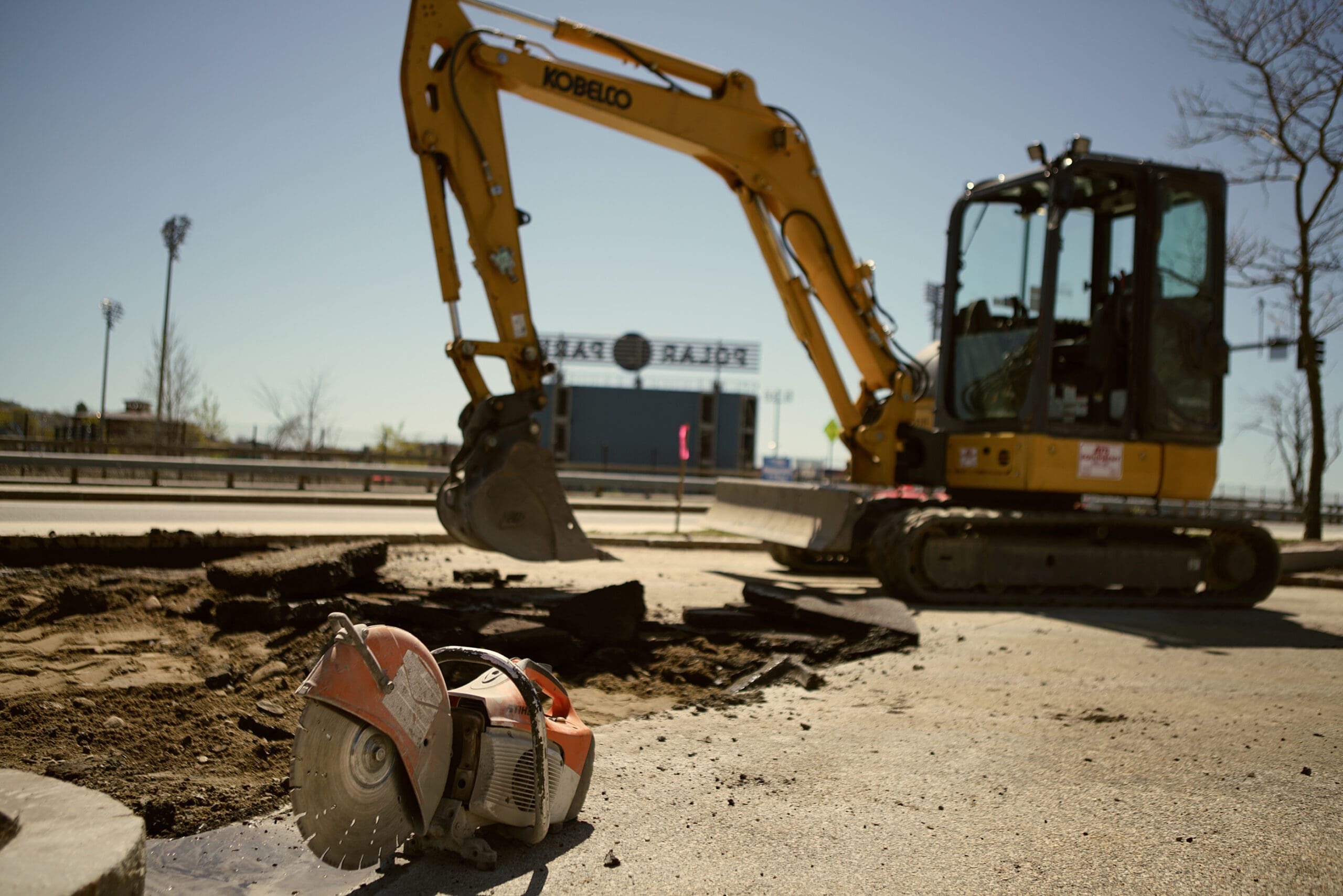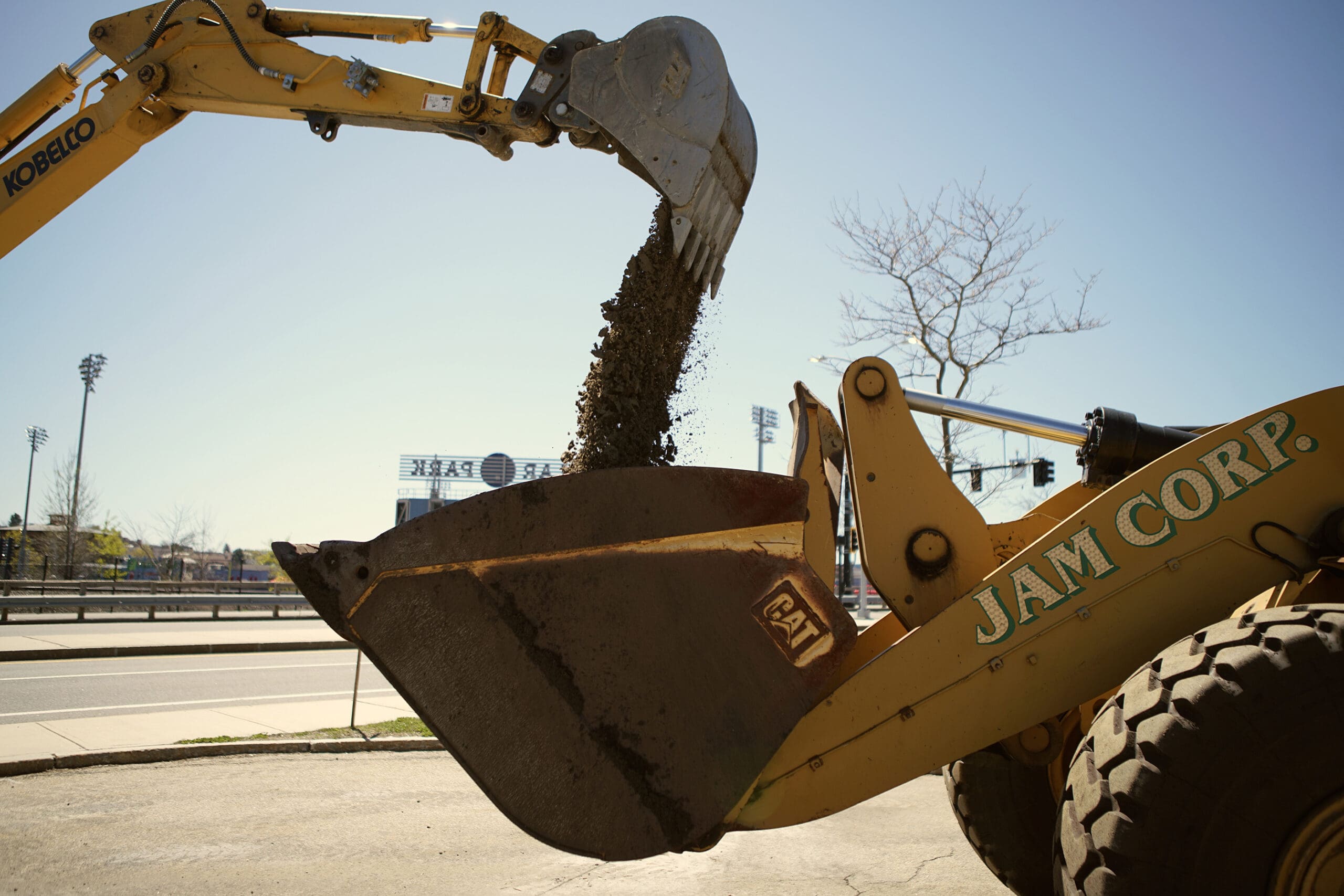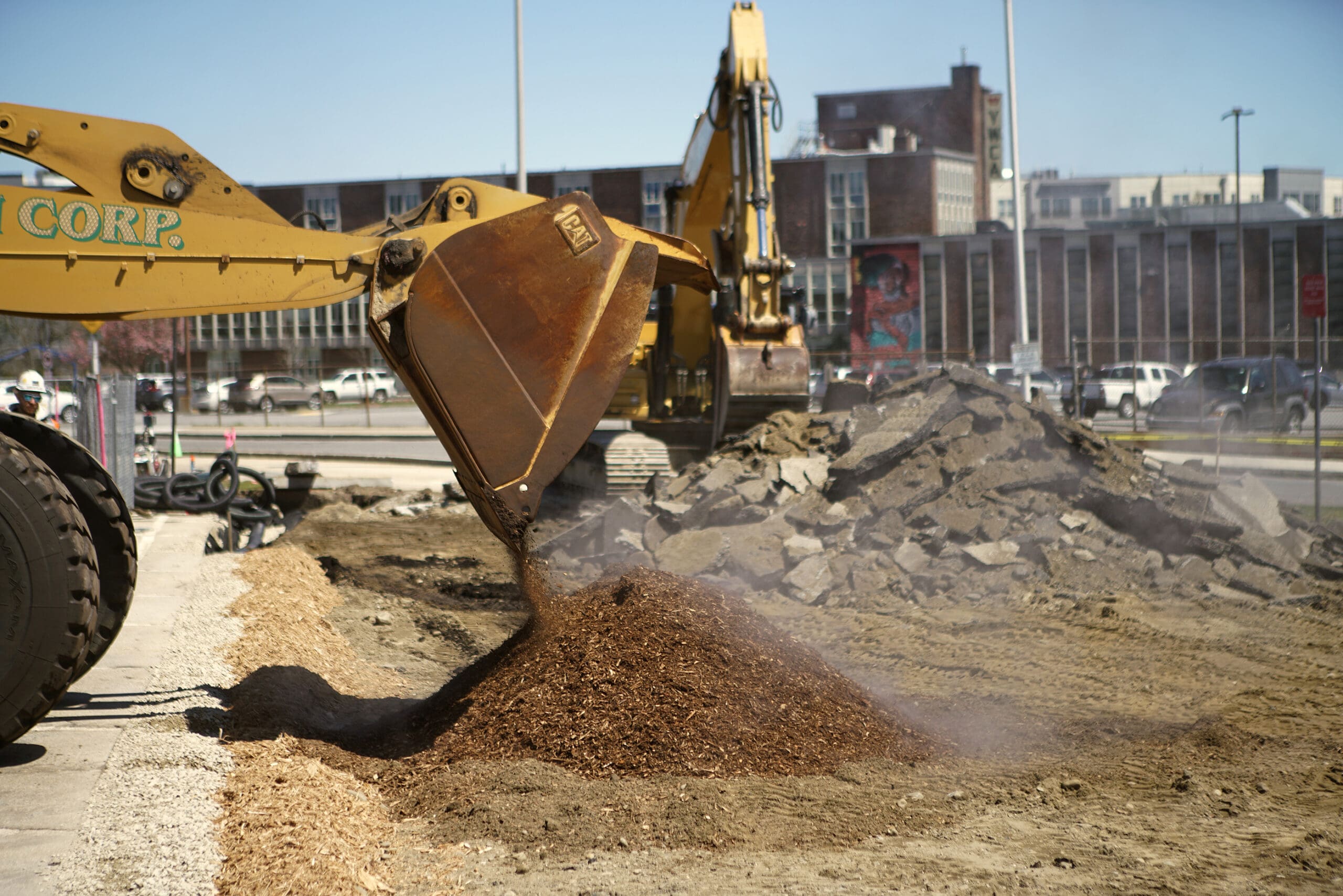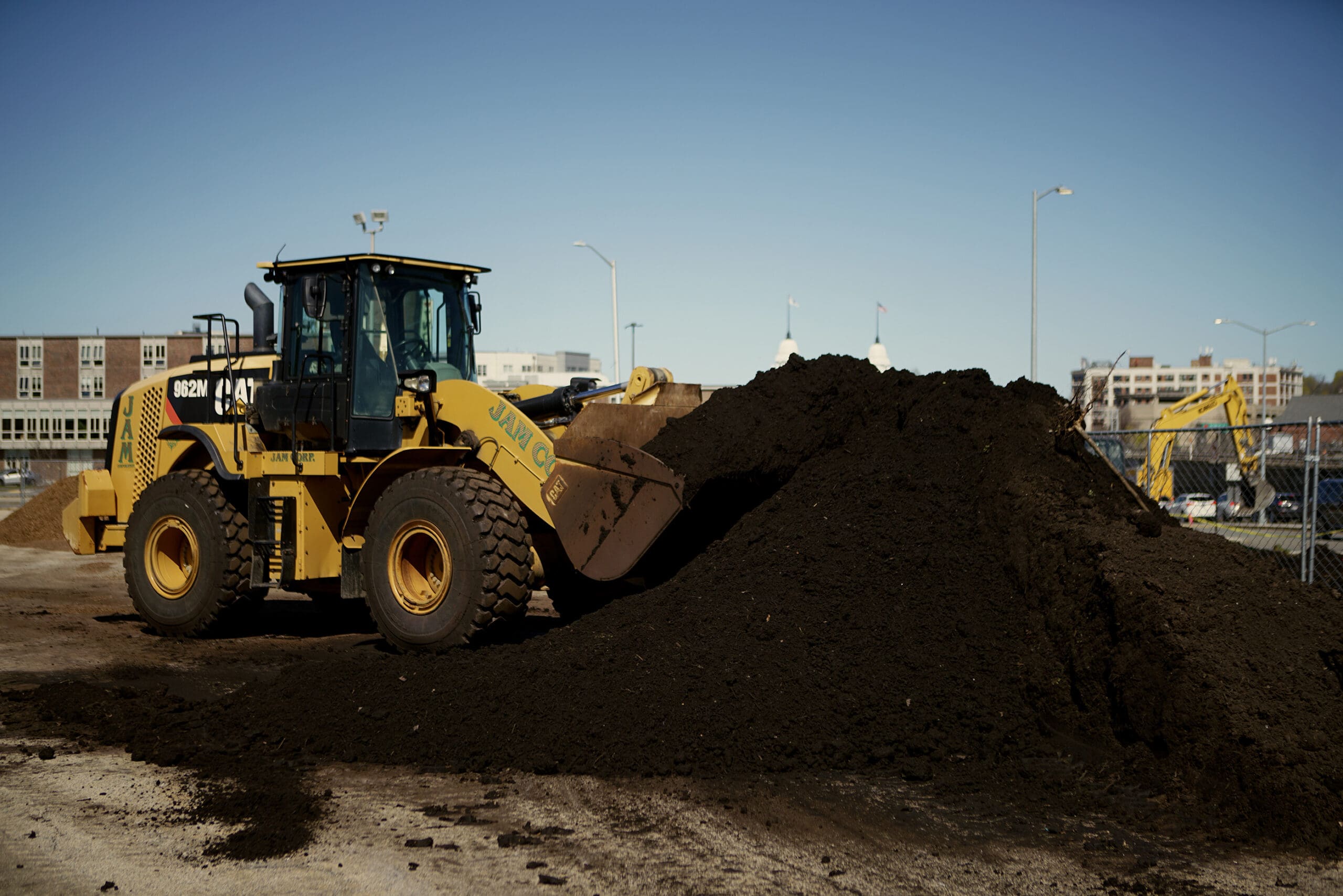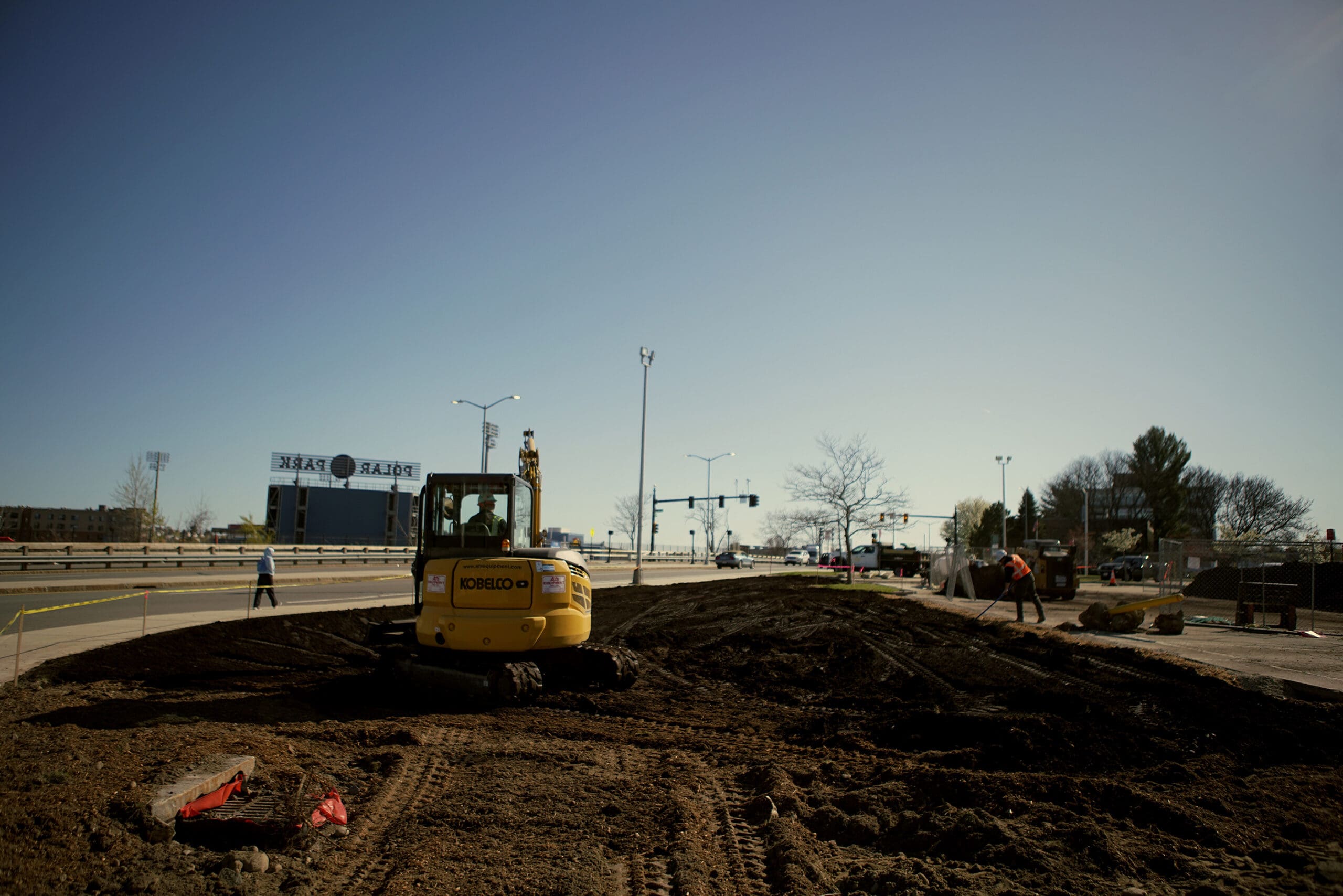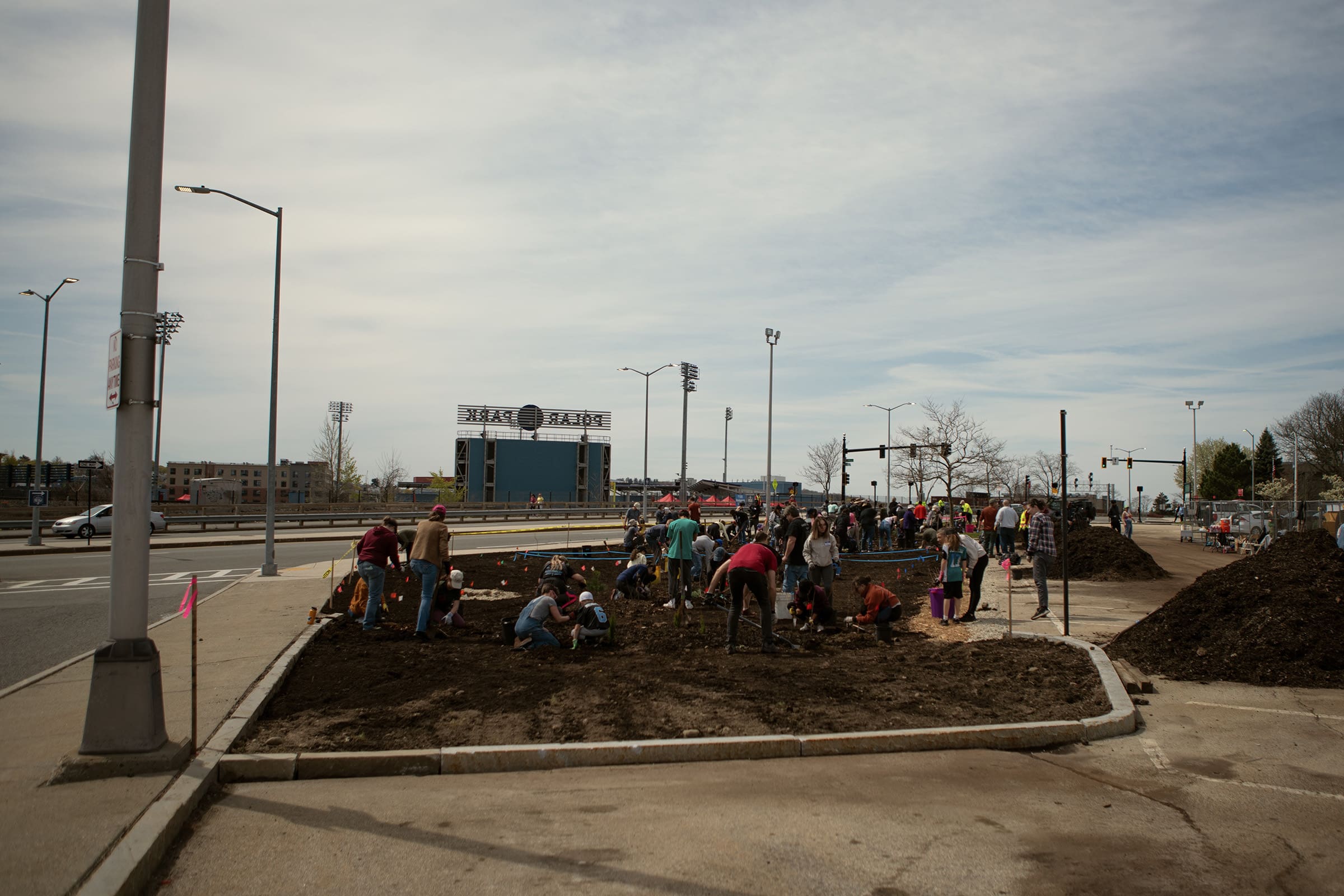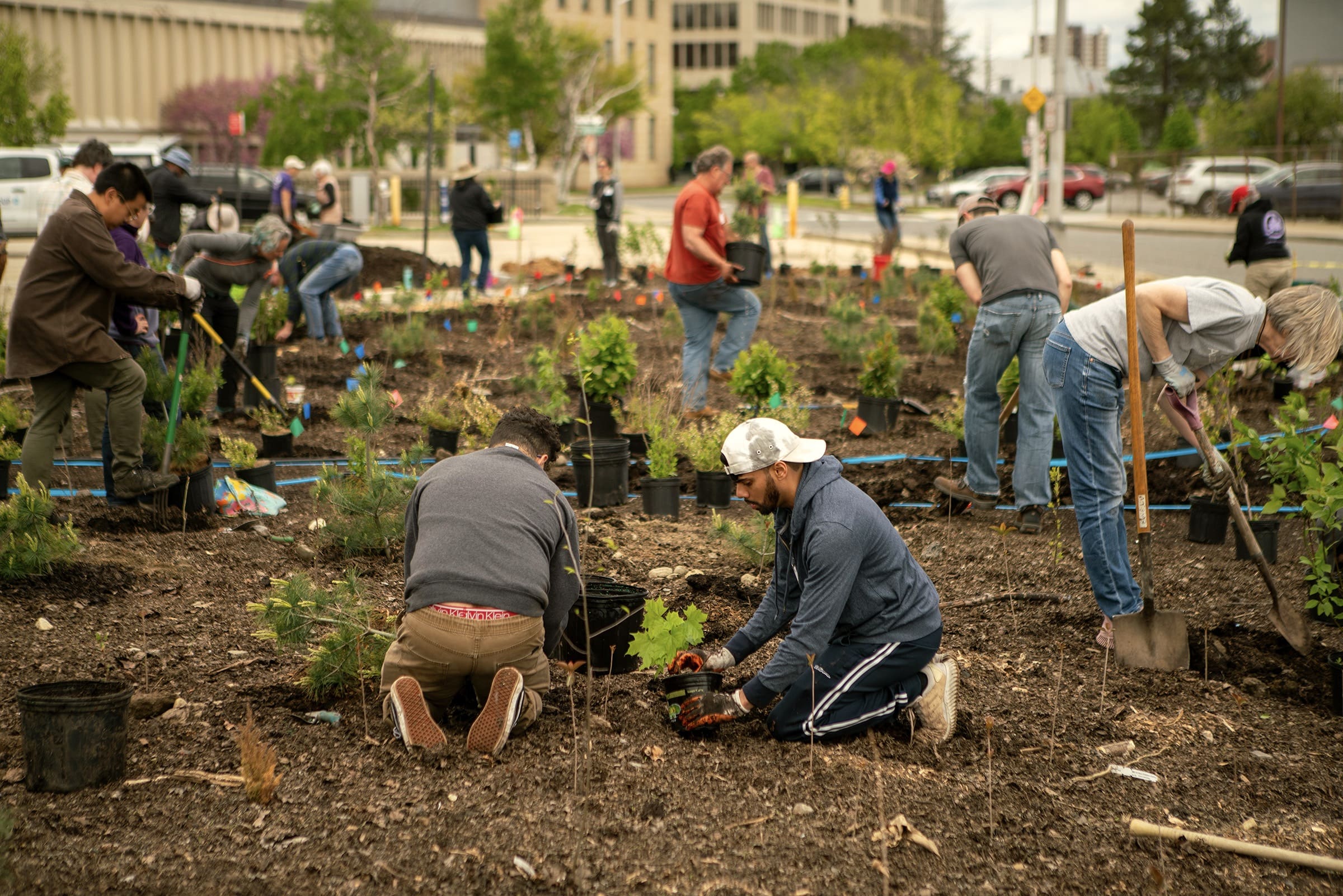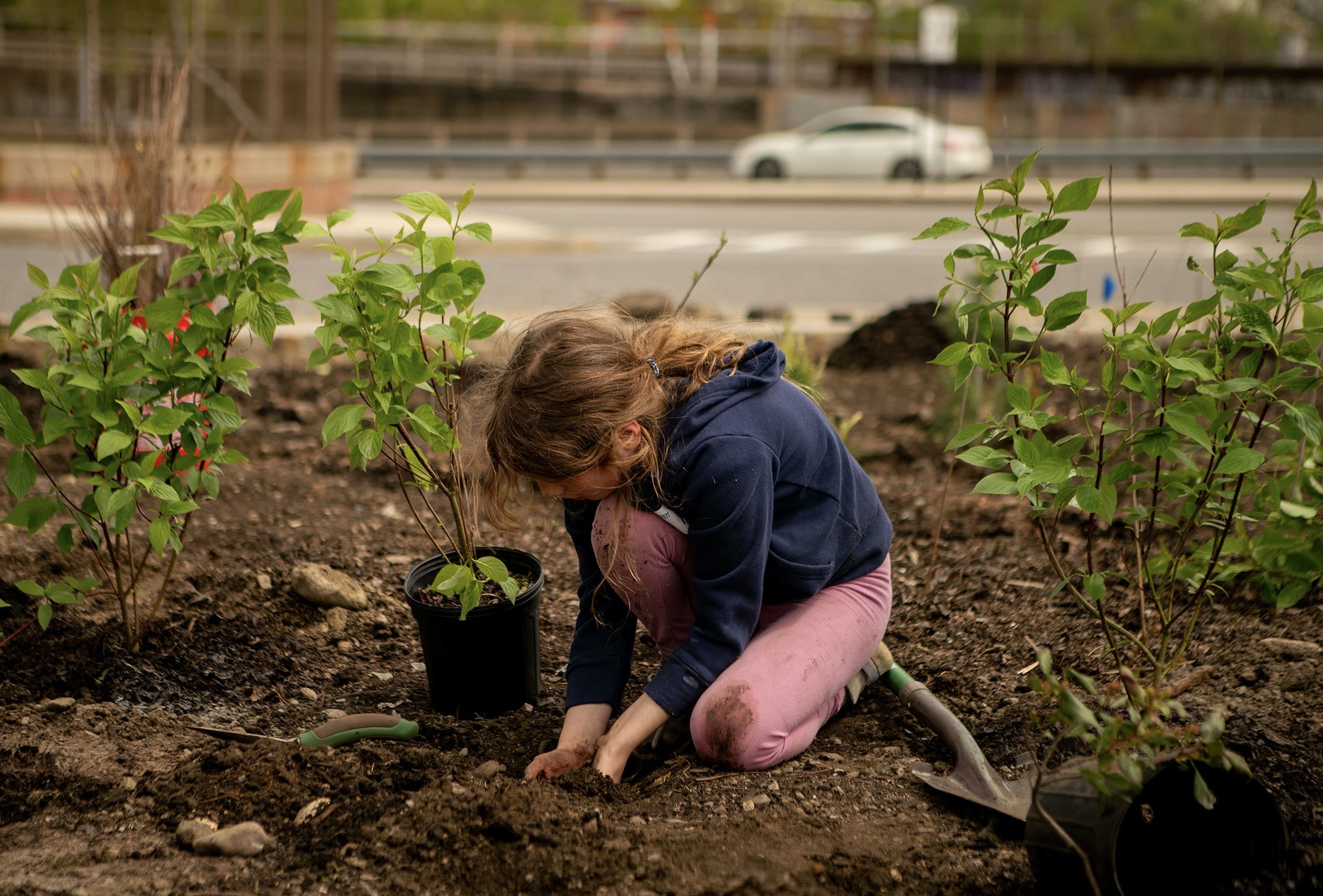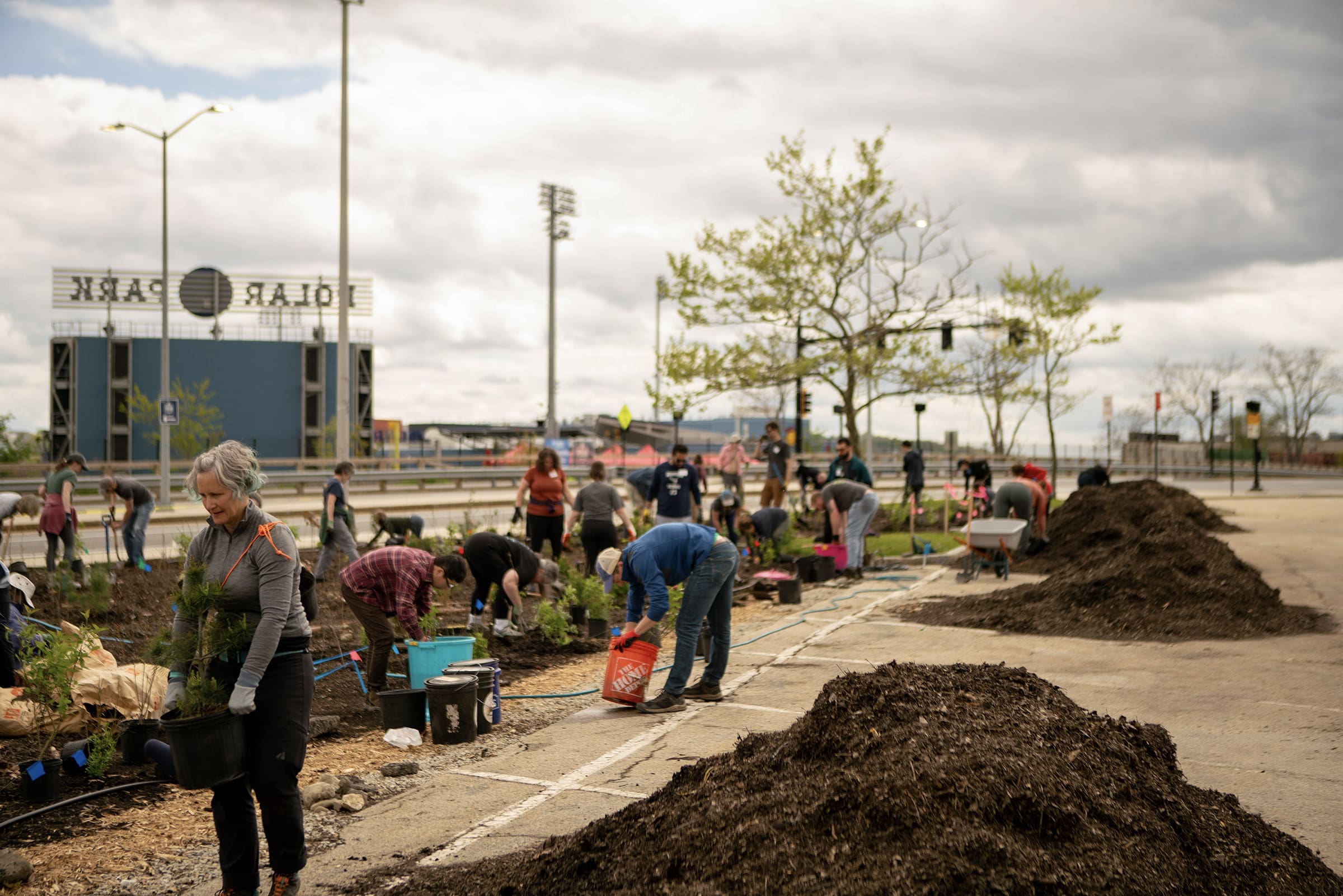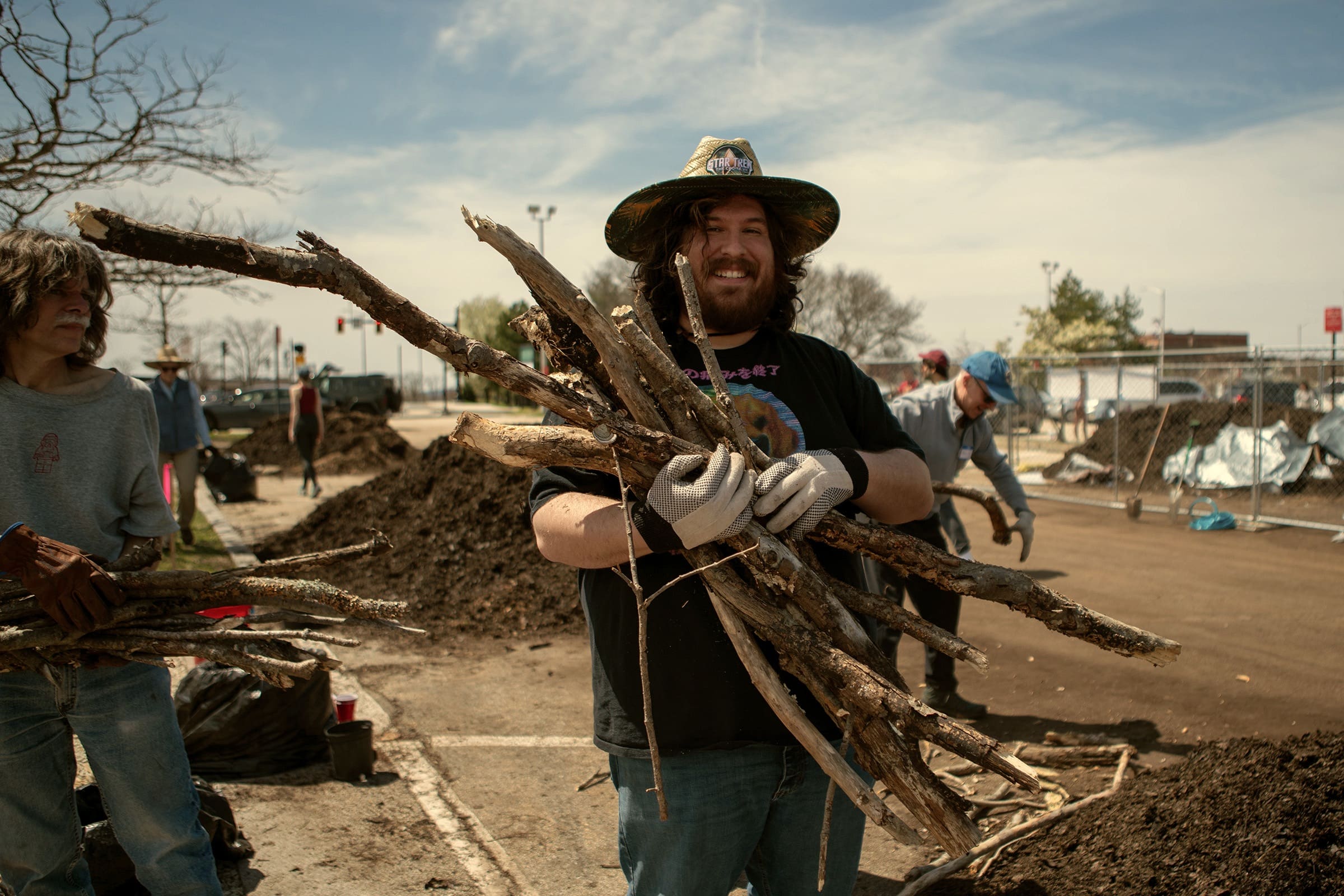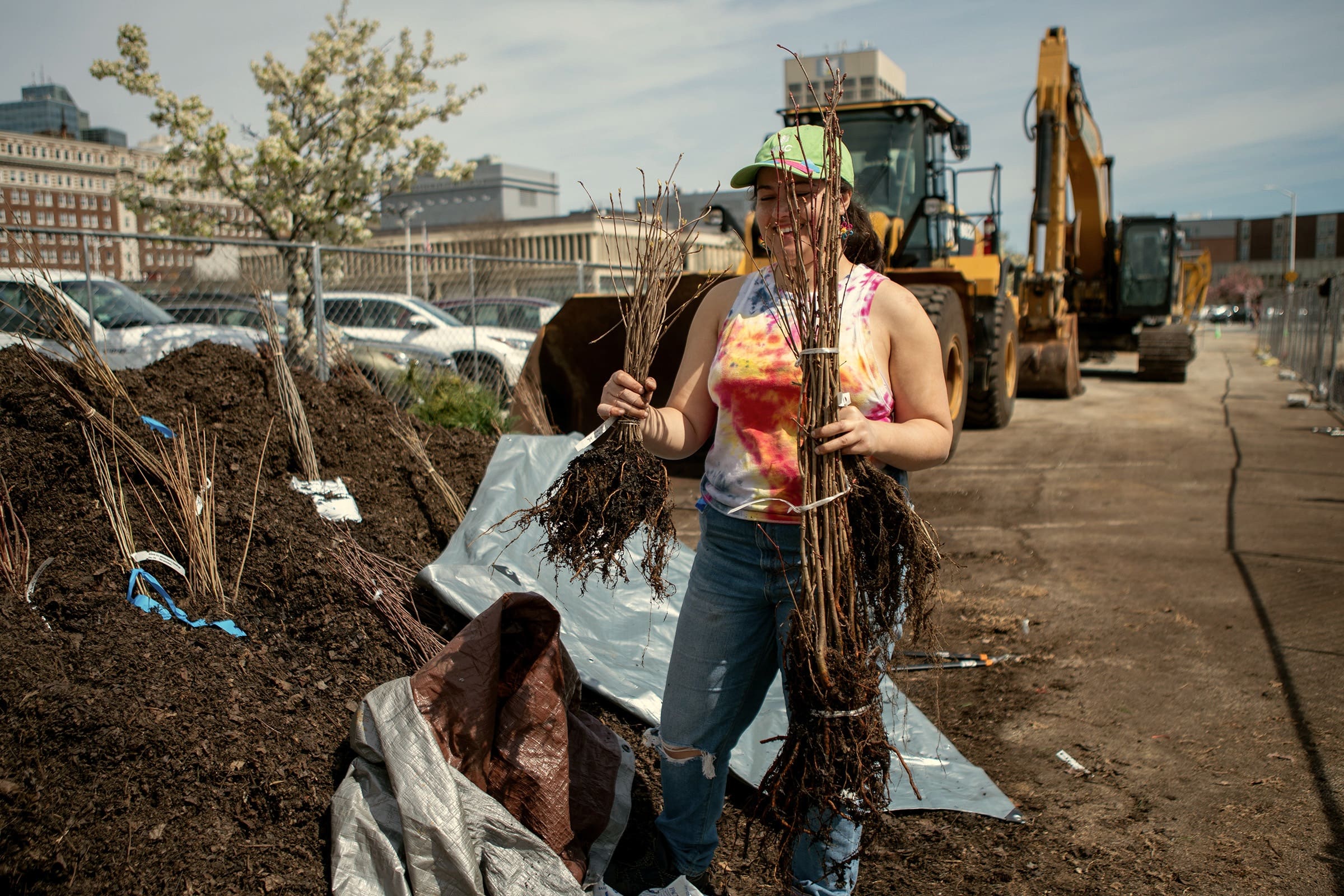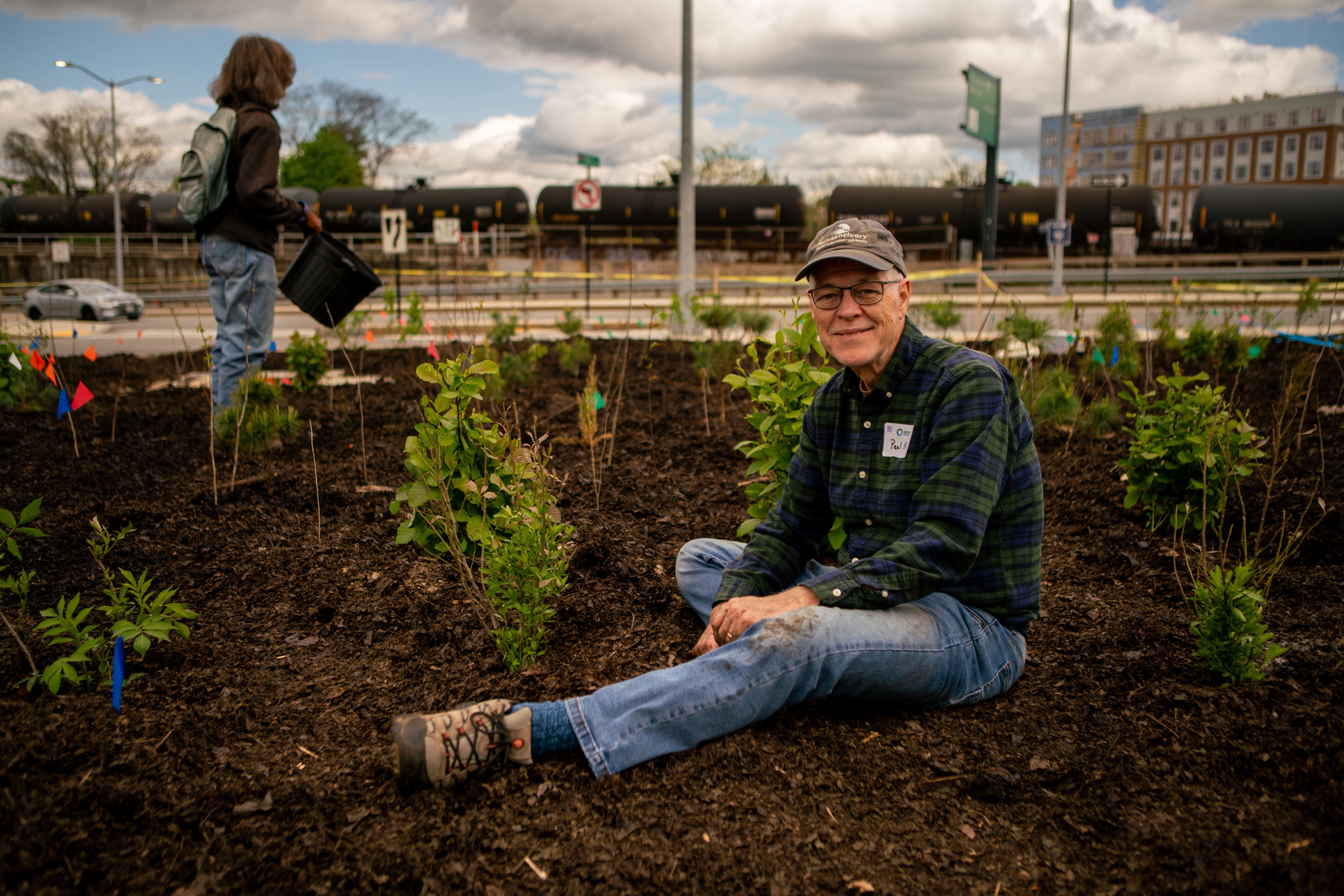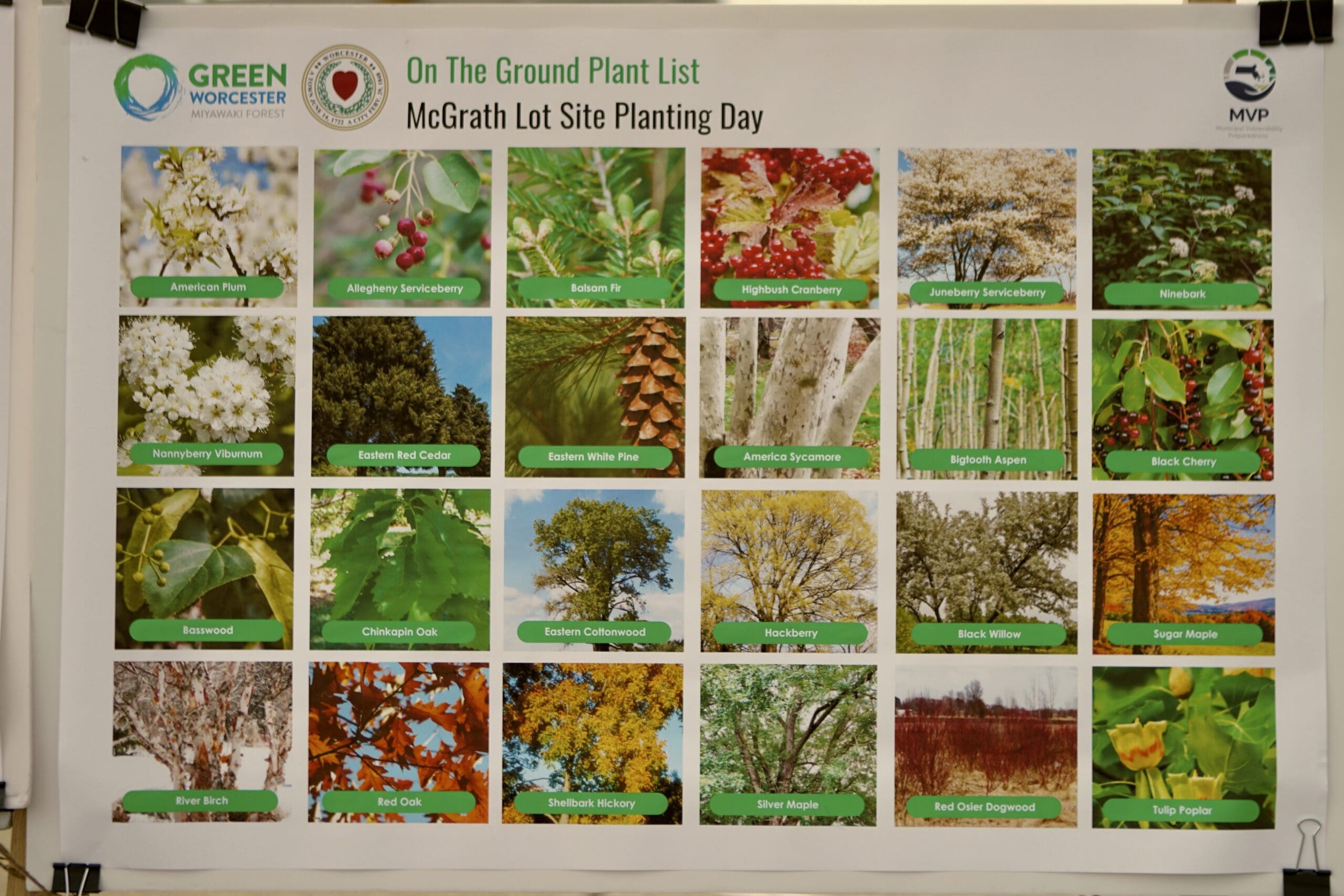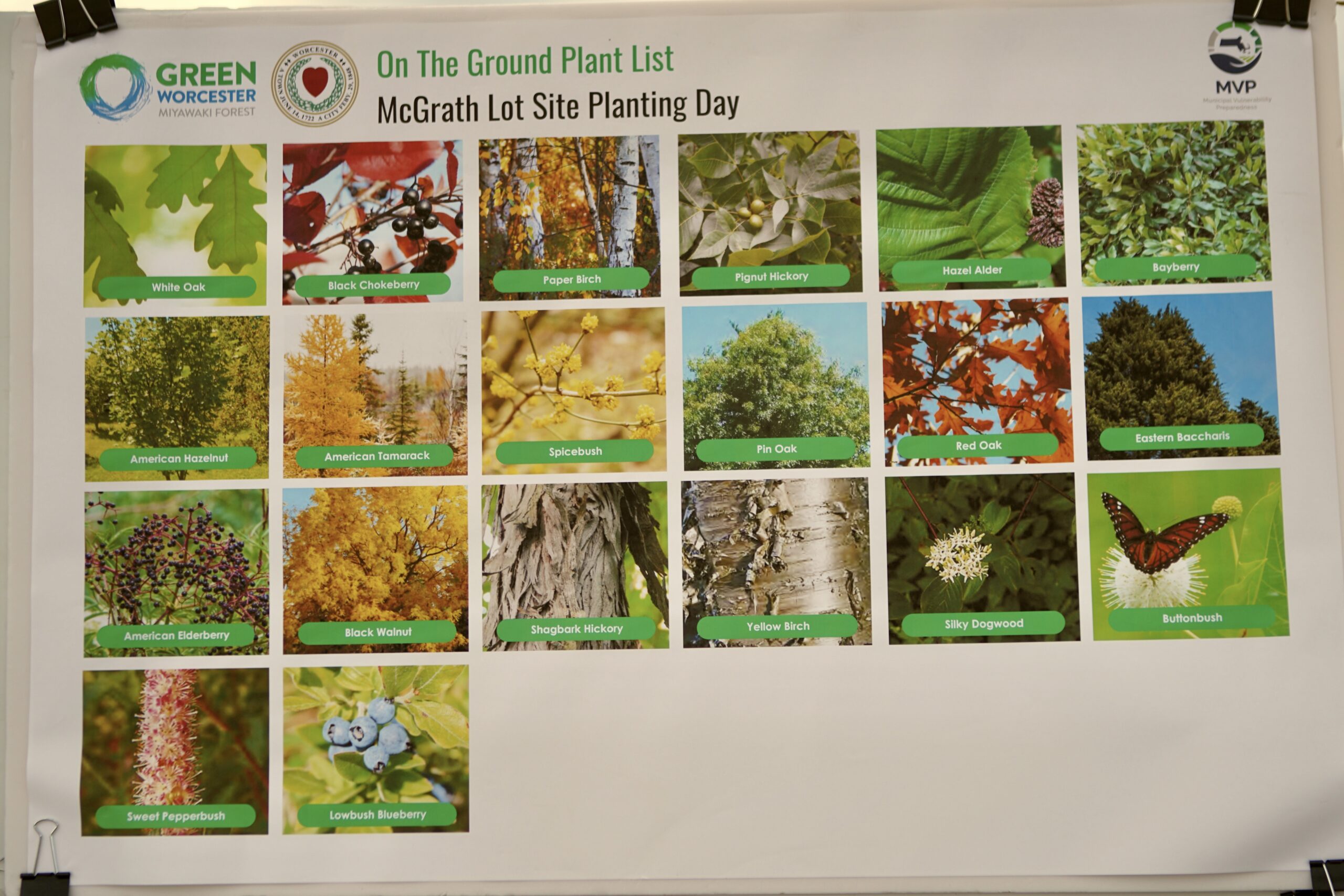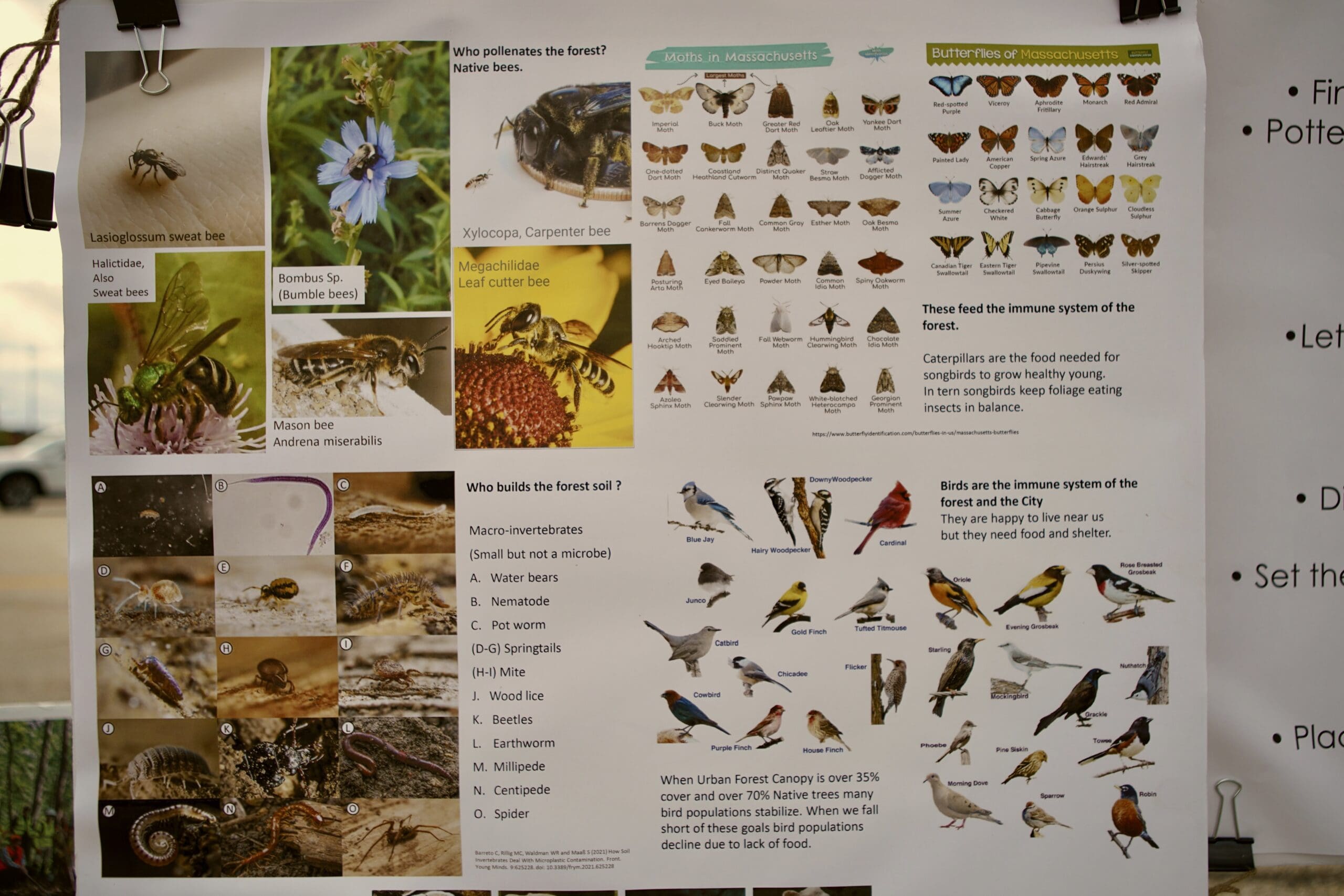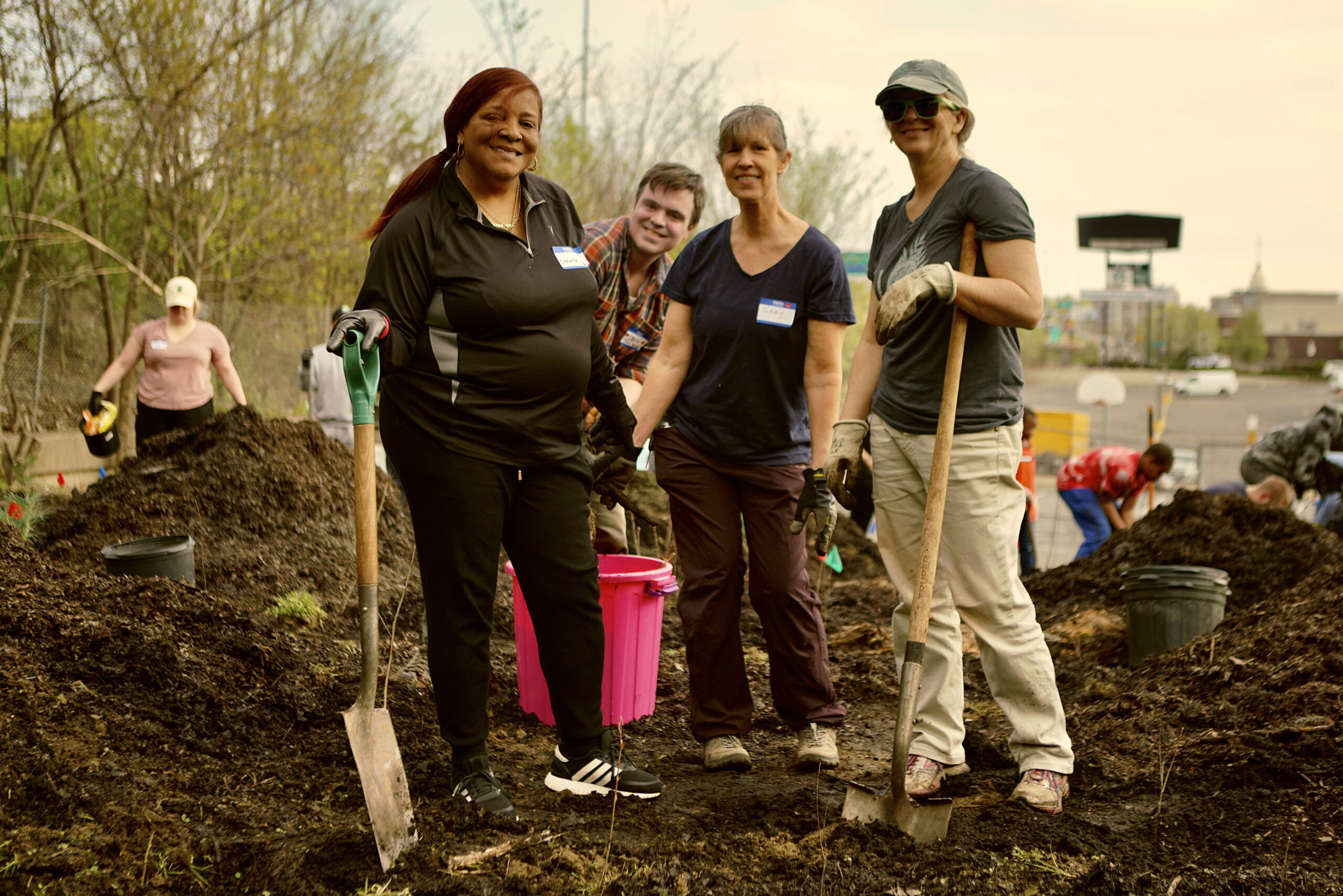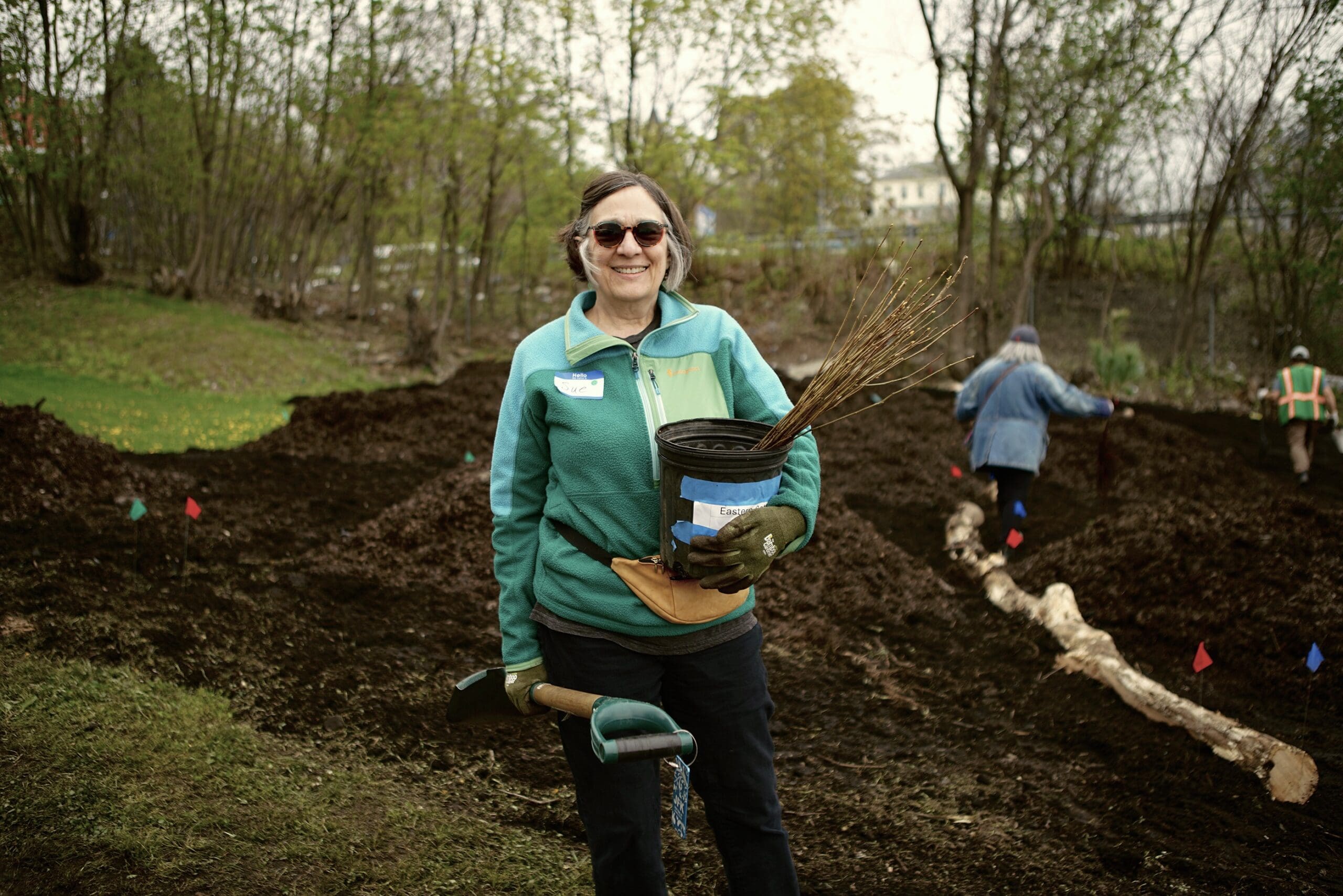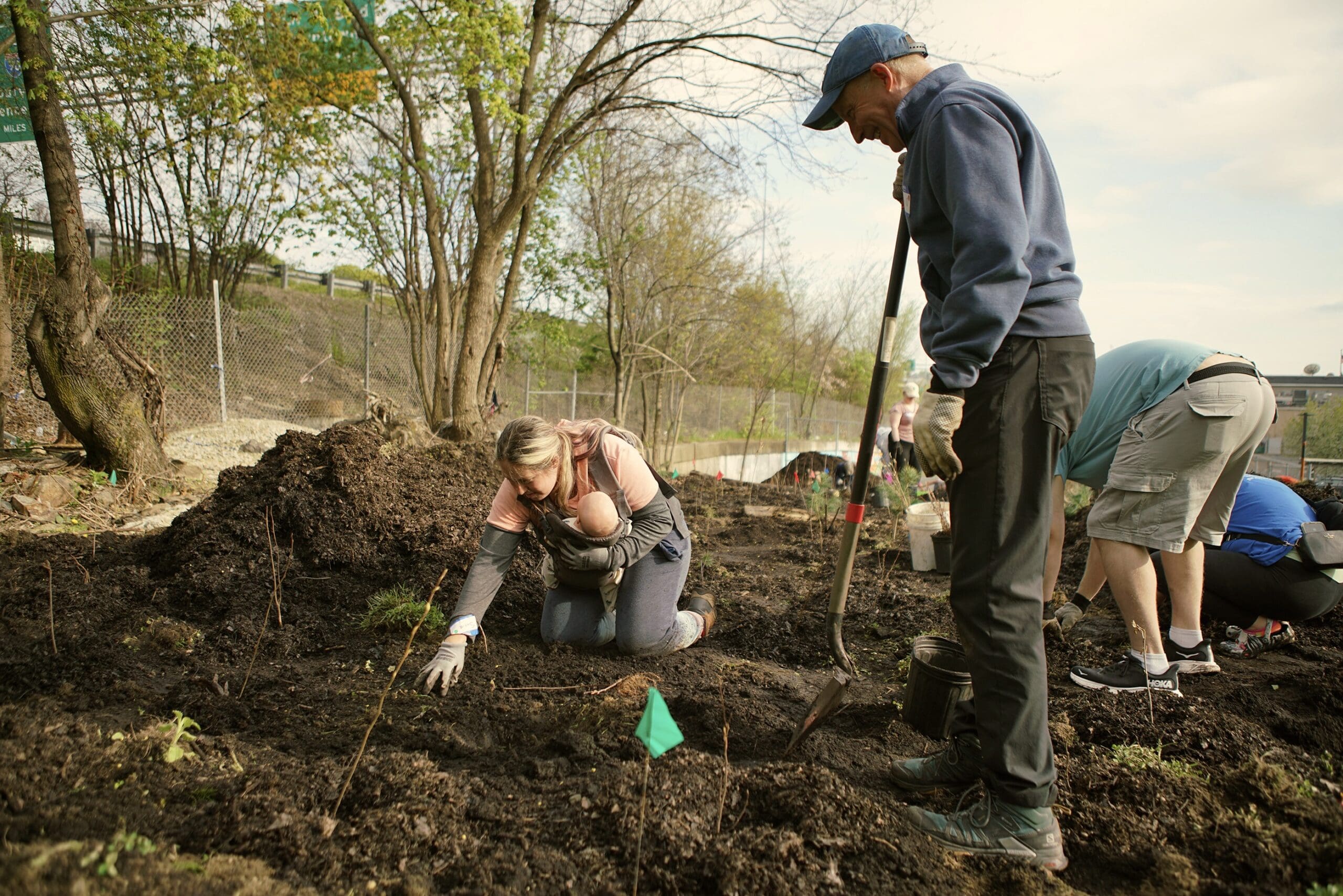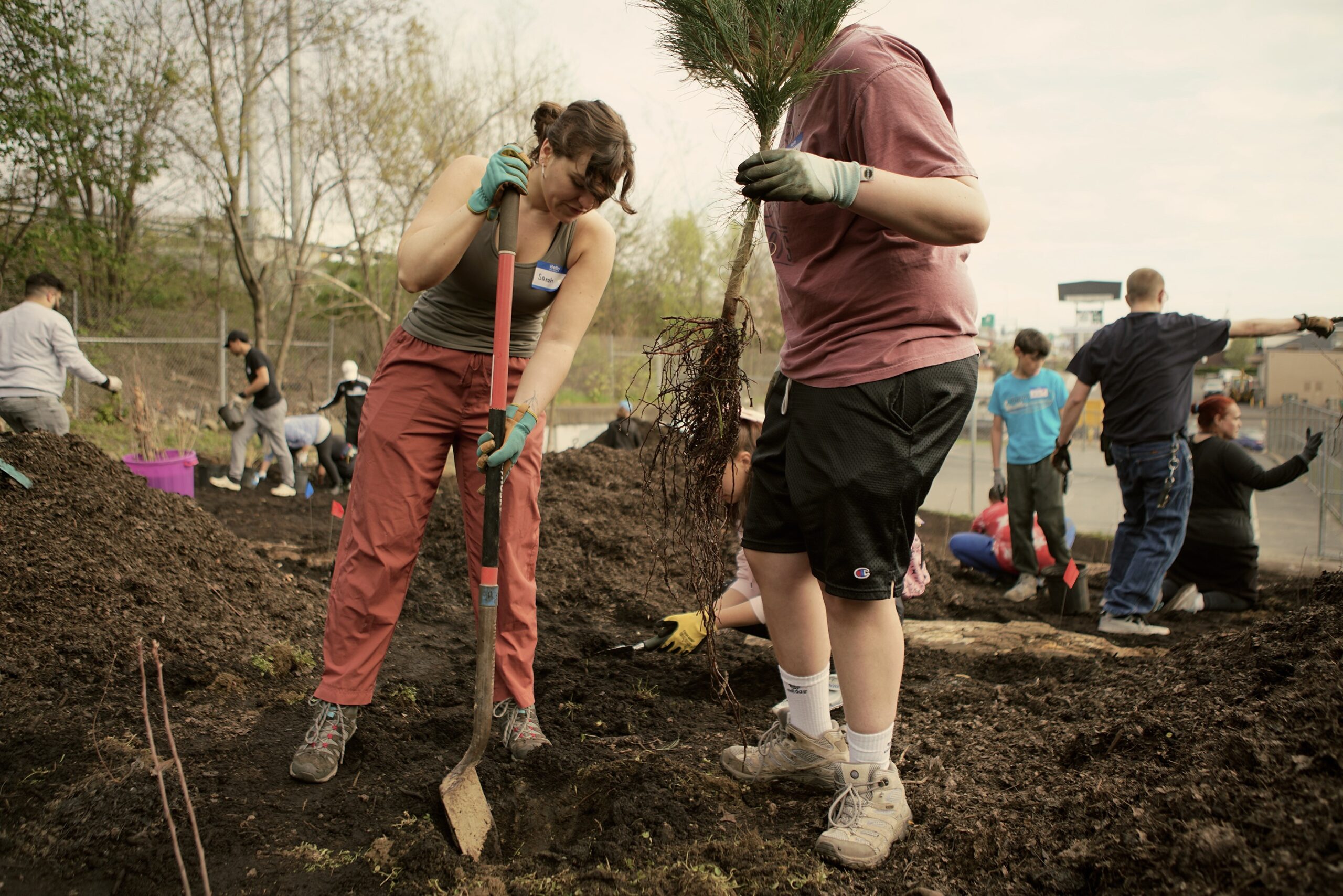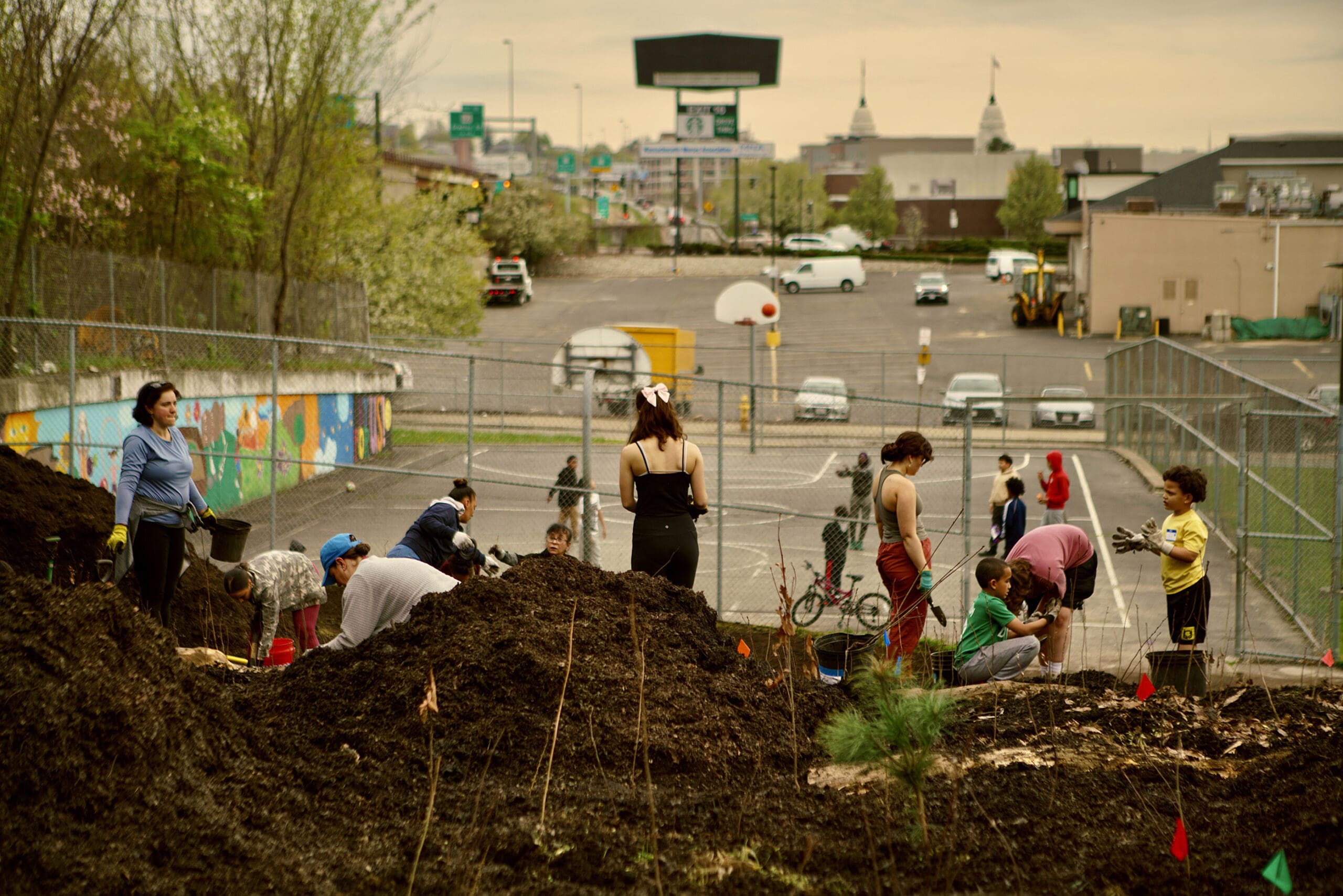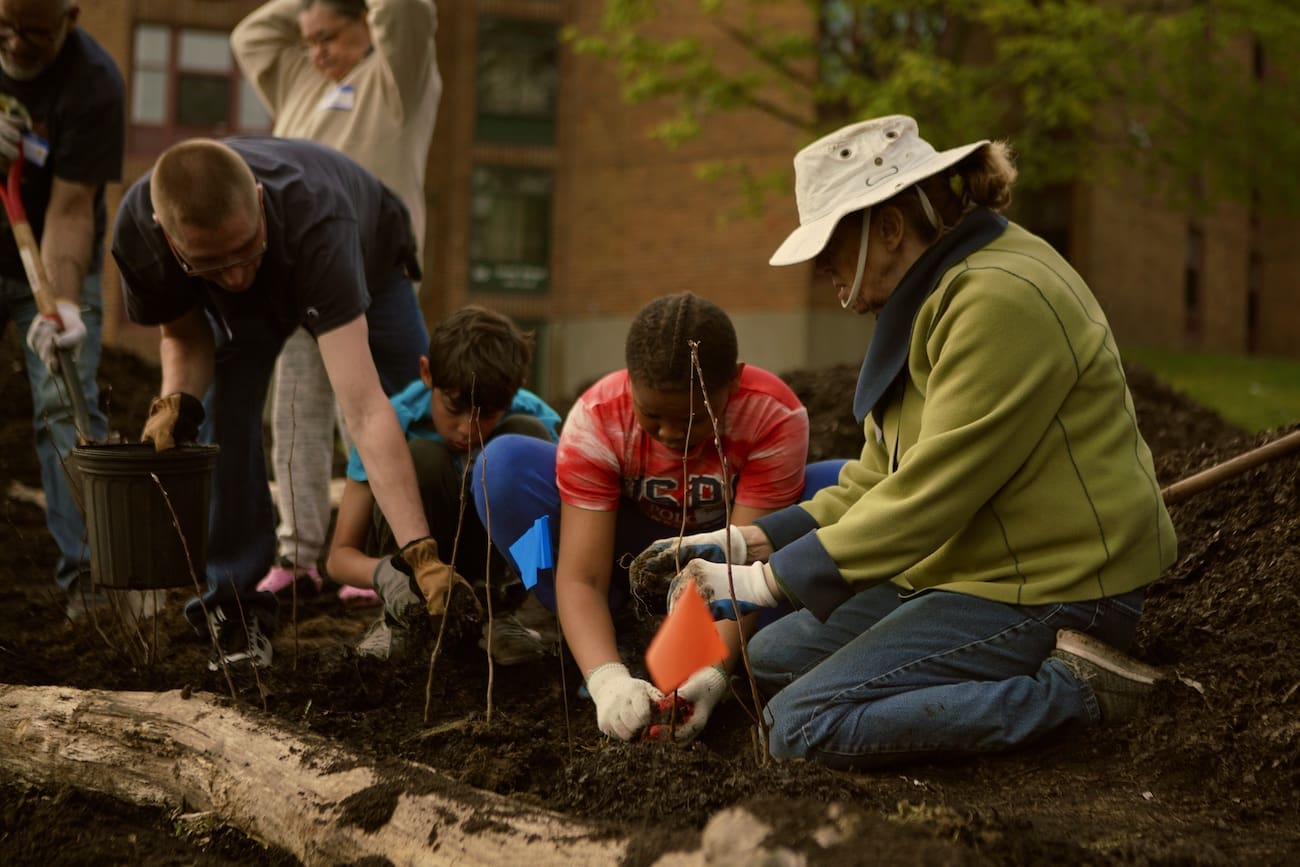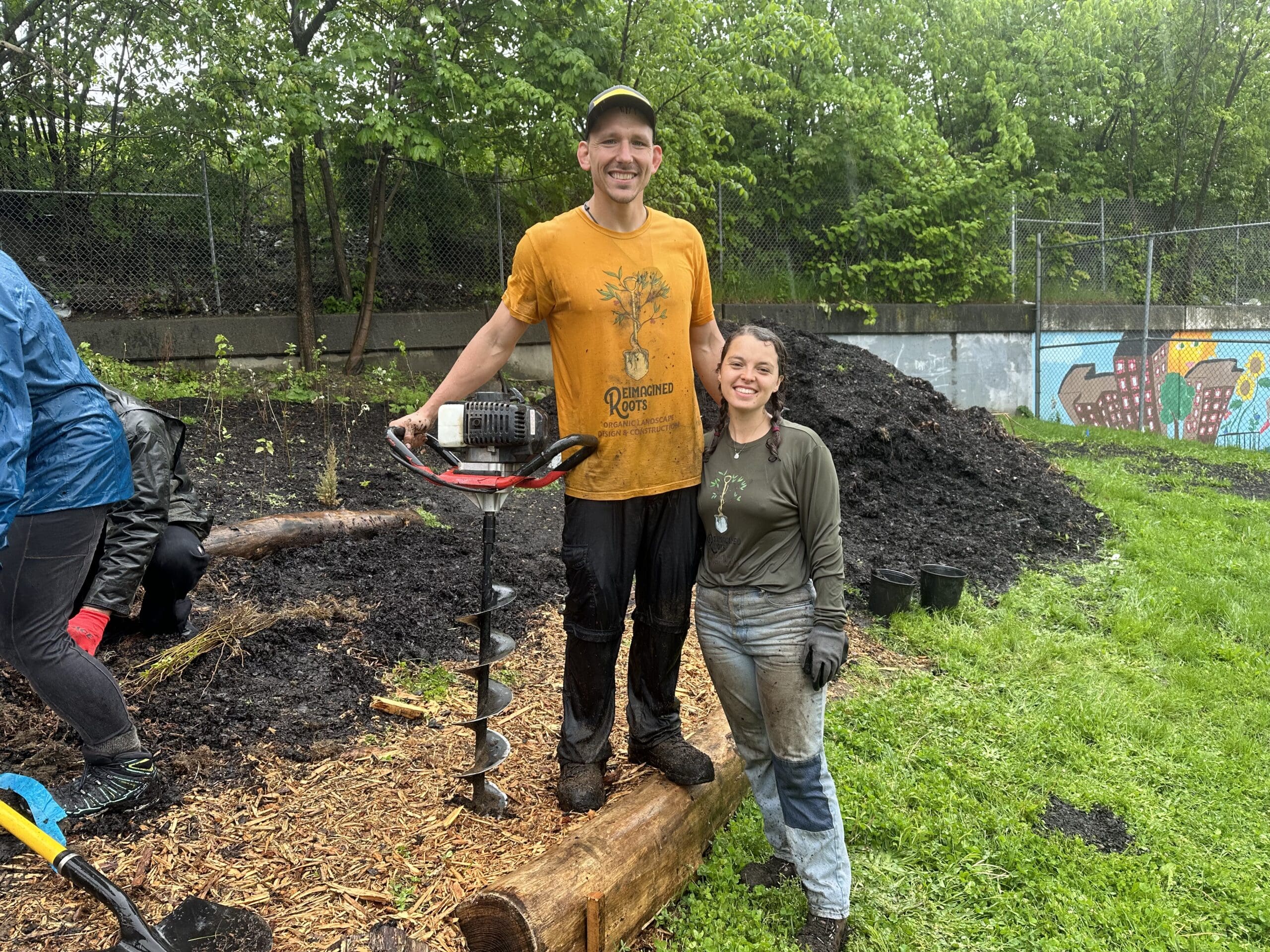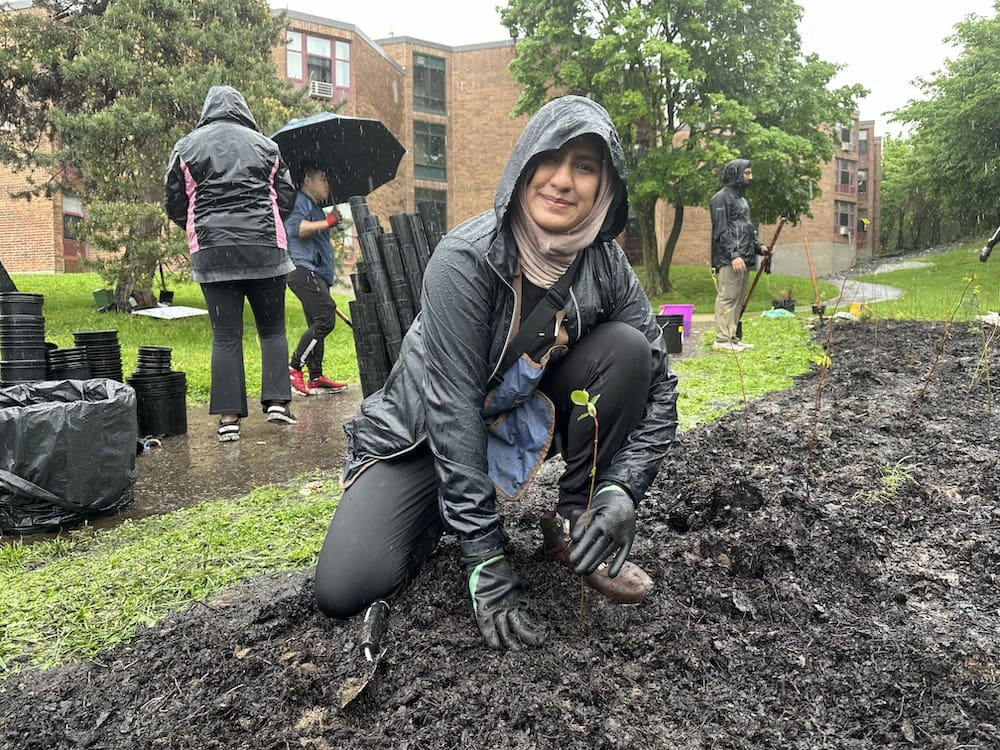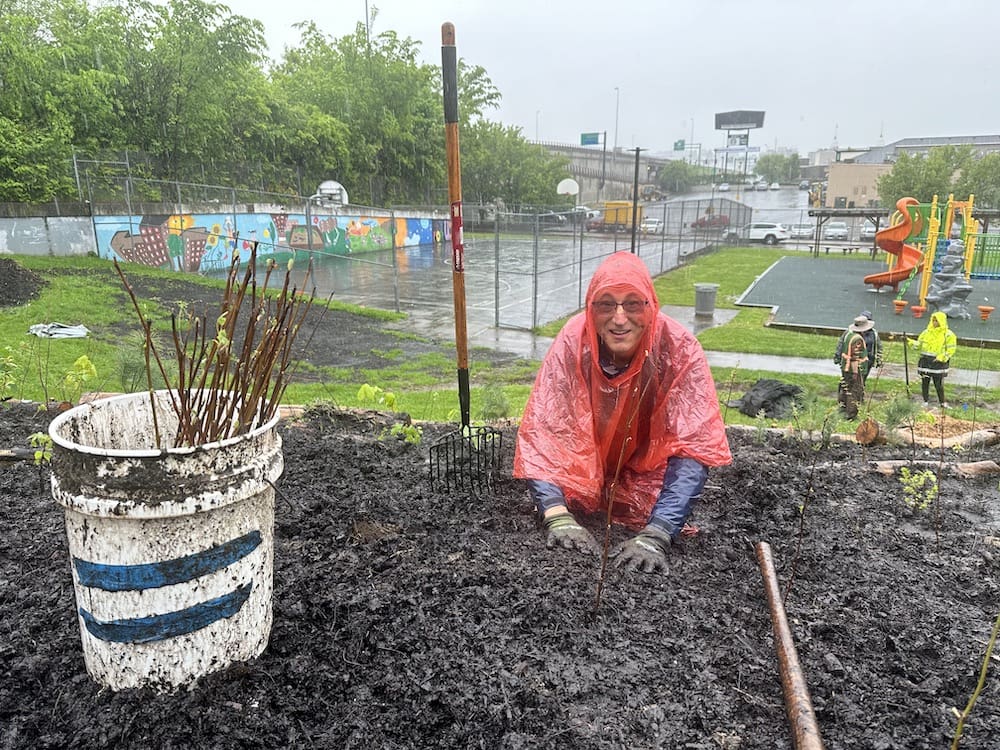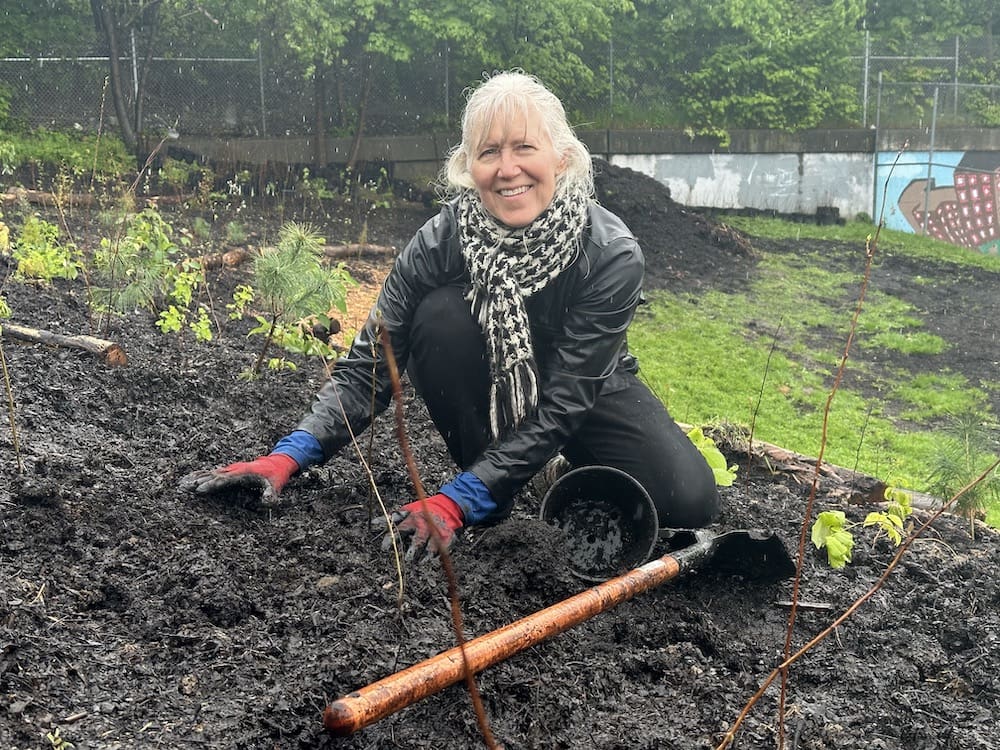A transformation is underway in Worcester, MA.
In this mid-sized city in Central Massachusetts long known for its industrial activity, city leadership has undertaken ambitious initiatives to address some of their climate resilience goals using the Miyawaki method. Together, Bio4Climate, BSC Group, and the City of Worcester planned and created two Miyawaki Forests in the heart of downtown Worcester this Spring, bringing together hundreds of community volunteers over multiple planting events to cool, green, and beautify the urban landscape and create a space for nature to thrive. One forest has been planted at the Worcester Public Library at the McGrath Parking Lot, while the other is located at Plumley Village Apartments.
From Asphalt to Forest

Outside the main branch of the Worcester Public Library, the McGrath Municipal Parking Lot at 3 Salem Street stands, a sea of paved parking spots hosting visitors to the library, to City Hall, and to office buildings and businesses in the surrounding area. Rarely, if ever, did the parking lot fill to capacity, and in the meantime it contributed to the trapping of heat, runoff, and excess stormwater that comes with a lack of trees and healthy soils. This made the McGrath Lot an ideal site for one of Worcester’s first two Miyawaki Forests – a highly trafficked, hot, gray, aerosol-filled public space just waiting for the chance to become something more – something functional, beautiful, and alive. At the corner of the parking lot abutting McGrath Blvd, one of the city’s major thoroughfares, we depaved the area, made way for nature, and with the help of many volunteers, began a new path for this pocket of the city.
The preparation for this first forest site started, of course, with asphalt removal to uncover the soil we were going to remediate and plant in. Within only two days, the asphalt was replaced with a mixture of nutrient-rich compost and leaf mulch incorporated with existing soil.
Over the course of multiple planting events and the annual Green Worcester Summit, the community came together to plant trees and shrubs into this site. Worcester residents of all ages, from students to parents and grandparents, got their hands into the soil and eagerly helped install this young forest ecosystem.
Many of Bio4Climate’s team members came together to get their hands into this project, including Maya Dutta and Alexandra Ionescu from the Miyawaki Program, as well as our Restoration Ecologist Jim Laurie and Executive Director Beck Mordini.

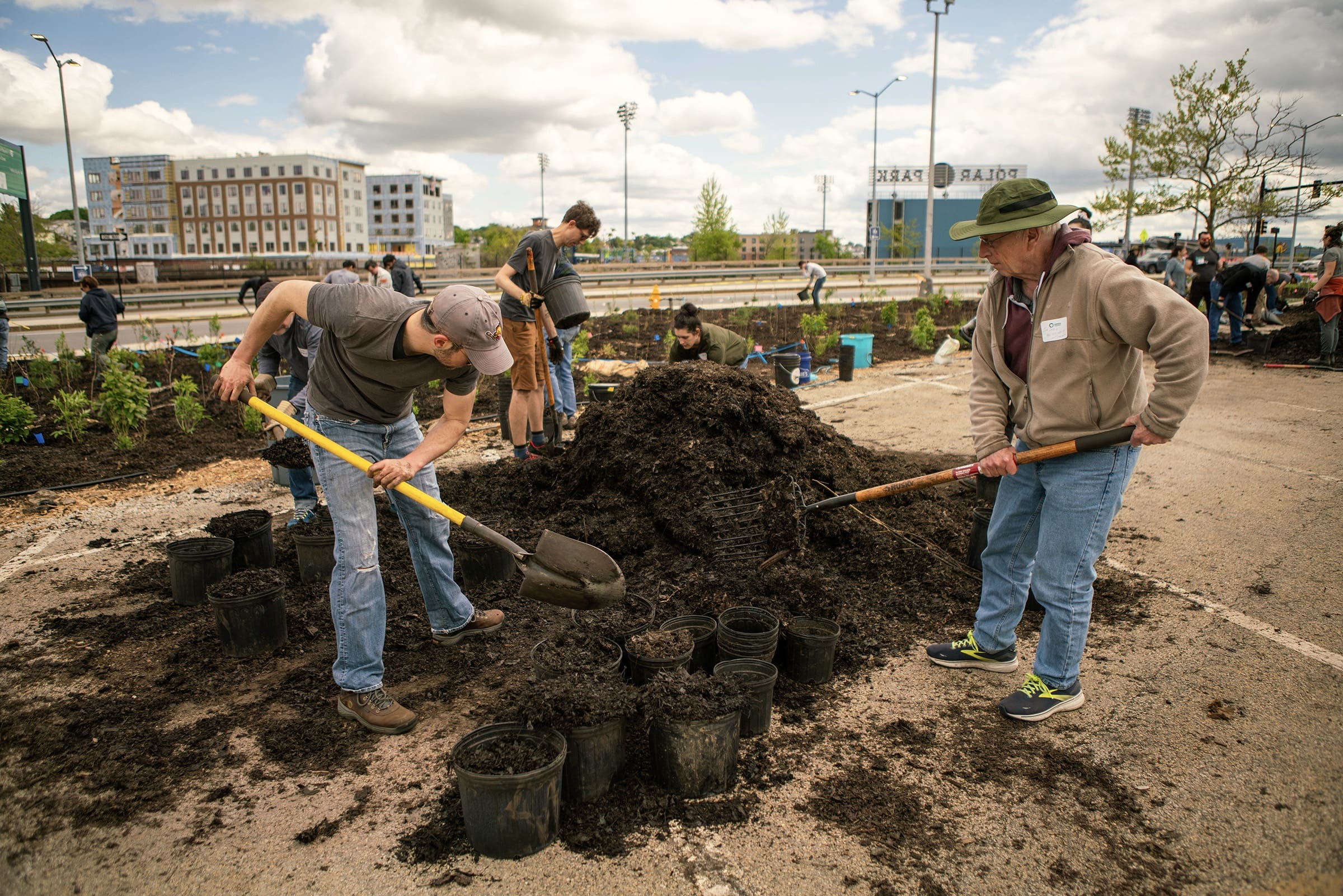


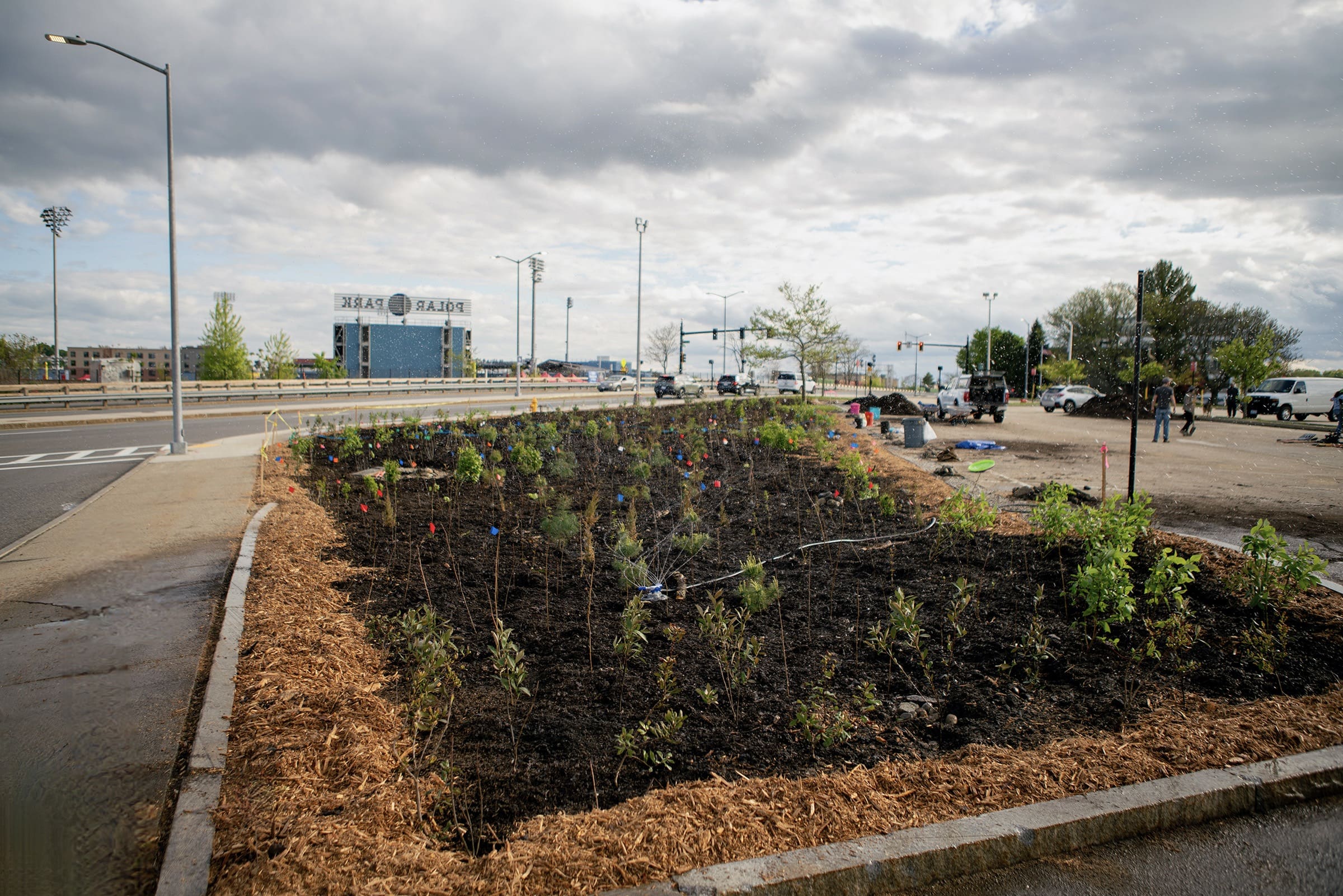
Some of the biodiversity-boosting superstars we planted in this forest include Northern Red Oaks, Black Cherries, and Shagbark Hickories. On planting days, volunteers got to learn what types of insects, birds, fungi and soil invertebrates build relationships with the vegetation in the forest and play their own key roles in the ecosystem.
From Lawn to Forest
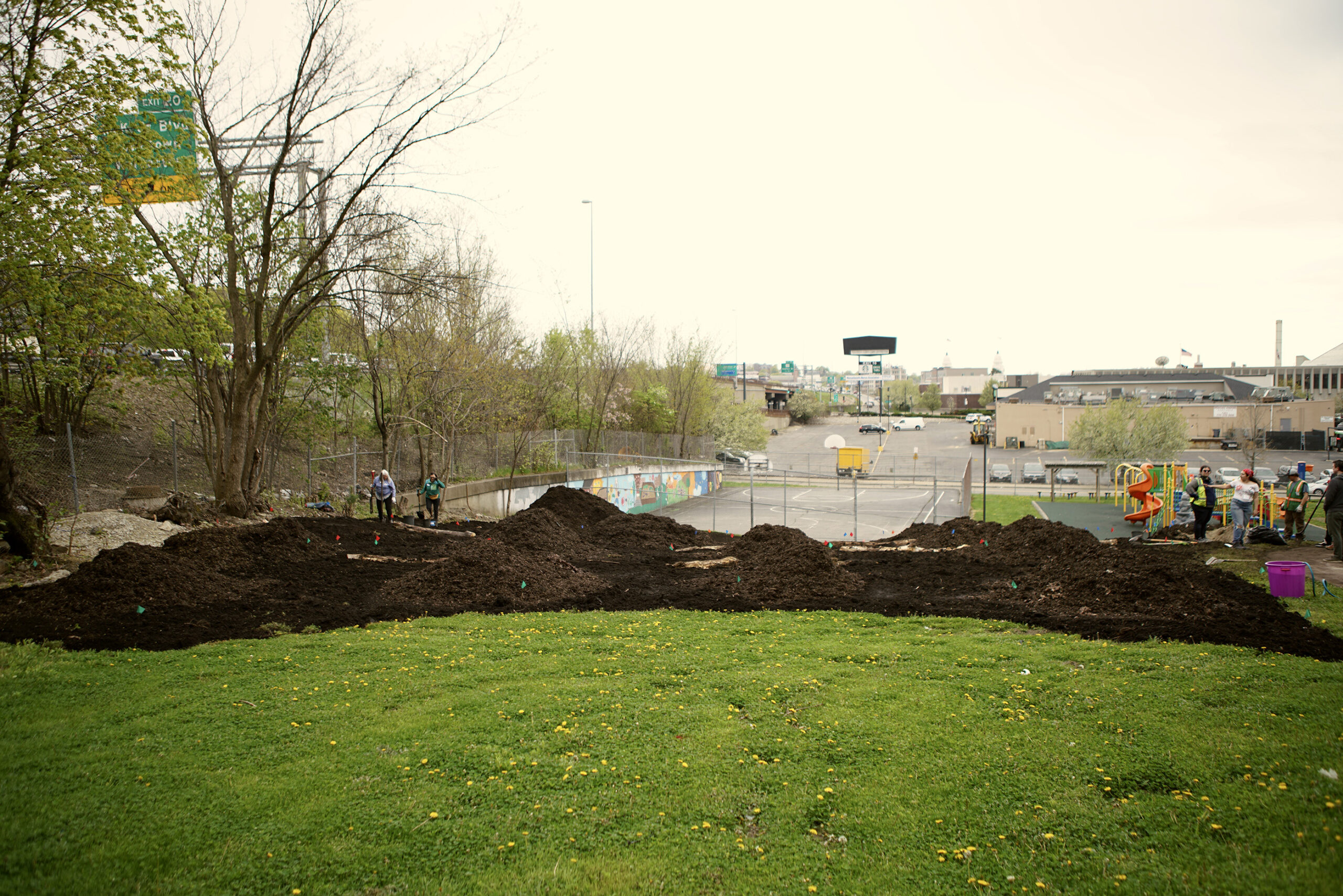
Worcester’s second Miyawaki Forest is at Plumley Village, an apartment complex that is home to about 430 families of diverse backgrounds and primarily low income levels. The complex spans a few square blocks and includes fifteen three-story apartment buildings and one 16-story high rise, connected by walkways, green spaces, and communal playgrounds and basketball courts for the many children who live there to enjoy. Next to the playground area off of Prospect Street, an area of about 10,000 square feet of lawn was designated to convert to a buzzing, biodiverse forest ecosystem.
One of the highlights of the Plumley Village plantings was working with the young residents there. Kids of all ages got into the freshly supercharged soil to plant saplings with us. Many of the older boys quickly took to the process, enthusiastically pitching in and competing for who got to plant the most trees in the day. While every person contributing was a valuable part of the process, these volunteers really energized and inspired the rest of us!
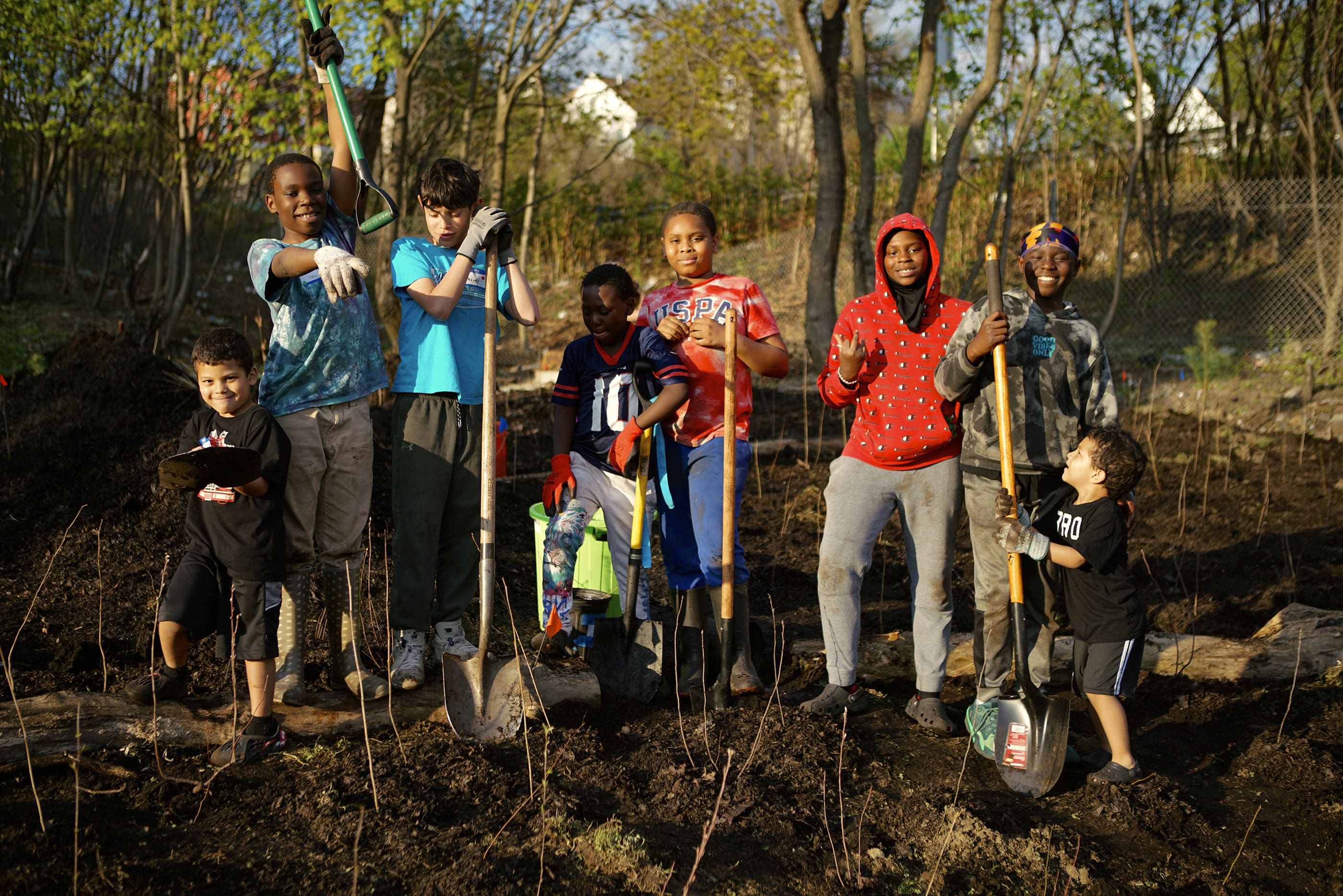
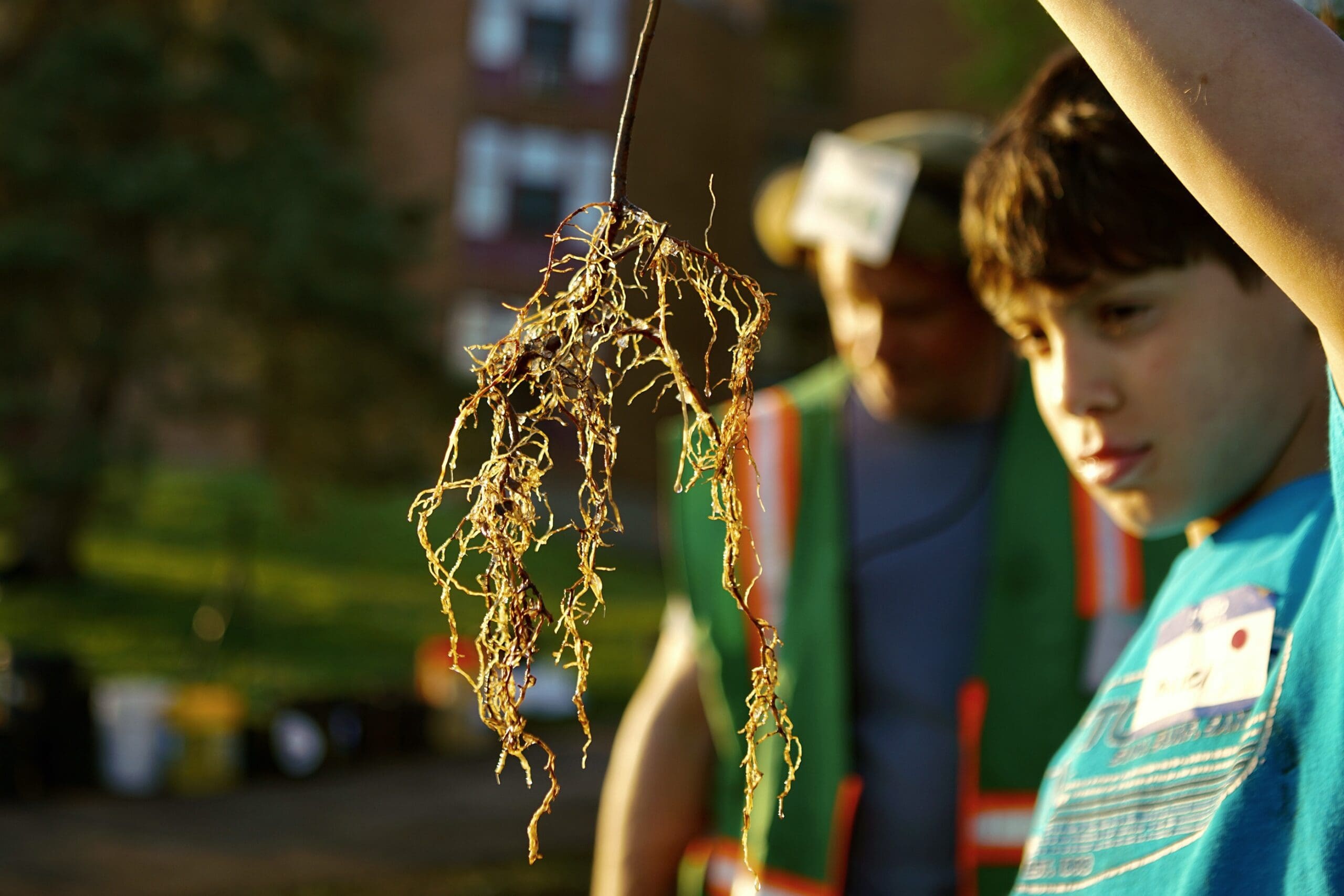
As with all big projects, you hit some unexpected roadblocks – in this case, a rainstorm on our second Plumley Village planting day that took us by surprise. Though the volume, intensity, and timeline of the rain stretched beyond the forecasts we expected, many volunteers still came through and persevered with great spirits. Louise Mitchell, Bio4Climate’s Outreach Specialist, made the 8 hour drive up from Baltimore to join the planting as a surprise to our team, and she was undeterred in her warmth and support despite the weather.
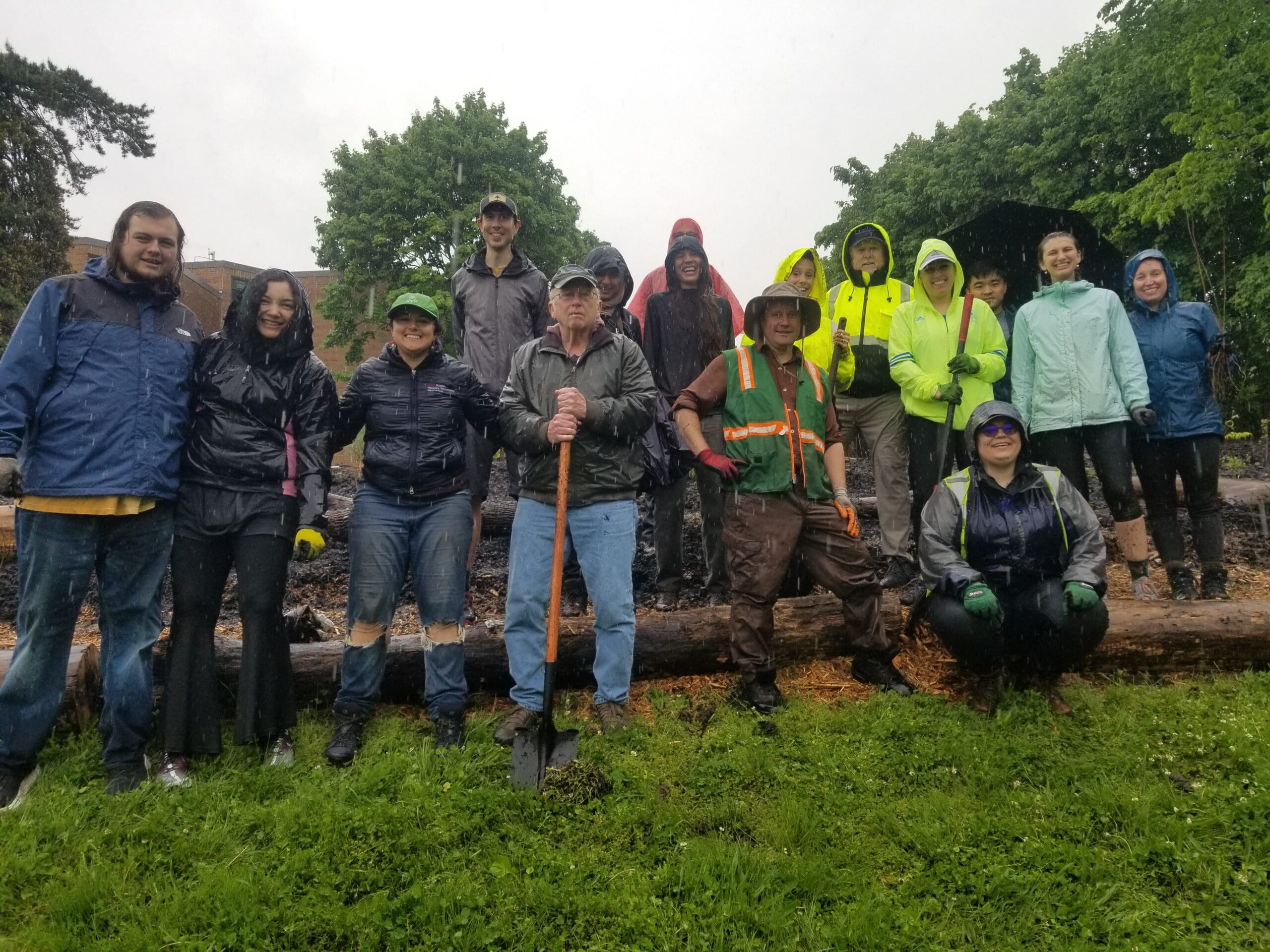
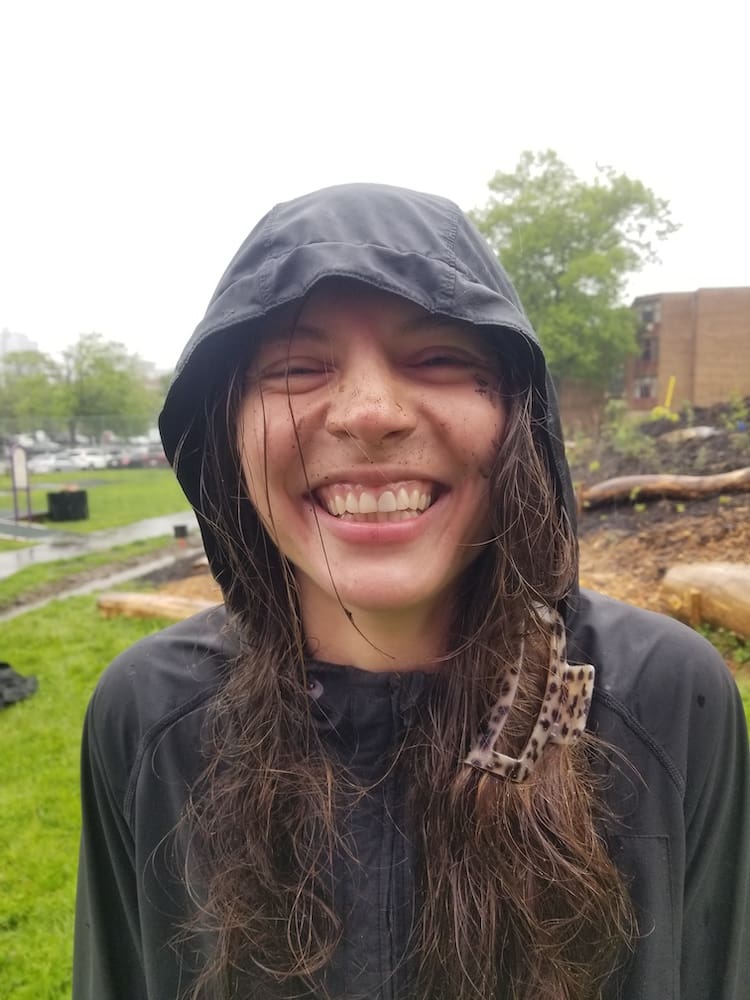

We are so grateful for all of the dedicated and joyful volunteers, partners, and supporters we worked with to bring these projects to life. Find out more about our Miyawaki Forest Program, and stay tuned for more photos, videos, film announcements, and project updates. And if you have reflections from your experience planting with us, please share them in the comments! Thank you for being part of our growing ecosystem.
All photos by Alexandra Ionescu (except for vertical photos by Louise Mitchell).


